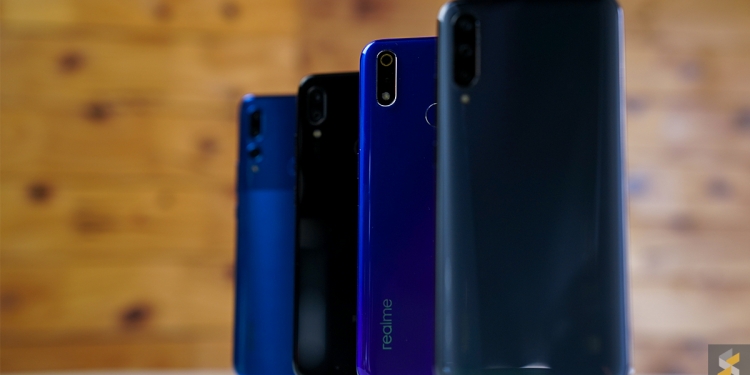I remember when I purchased my first ever smartphone, almost 10 years ago. It was a Nokia E5, ran on Symbian OS, and came with a 5MP single camera that had no autofocus. But it opened up so many doors for me—I was paying something like RM3.50 for 100MB/week of data, which was just about enough for my WhatsApp and Twitter needs. And it all came at a low price of RM500.
But the prices of smartphones have been steadily rising through the years, and a midrange smartphone can go for up to RM1,500 nowadays. And of course, there are some great devices in the price bracket. If you’ve got a higher budget, you can check out our buyer’s guide to the best smartphones under RM1,500 here.
But that’s not to say that there isn’t good value to be found in the sub-RM1,000 range. In fact, some of the smartphones that we’ve listed below certainly punch above their weight, even if you’ve got a bigger budget. So if you’re in the market for a budget smartphone, we’ve compiled a list of the best smartphones you can buy under RM1,000 for 2019.
But first, let’s set the parameters of this guide. To keep things current, the devices listed in this edition are all a year-old, at most. And to help you get the best devices in this bracket, they’ll all be priced from RM600 and above.
A quick breakdown of this guide: each device will have an individual entry, with relevant specs and pictures included. There will also be updated prices and links within each page—as with our other guides, we’ll be providing links to where to buy them, and only smartphones that are officially available in Malaysia will be included in this buyer’s guide.
When you’re done going through the entries, we’ve put all of the important information together in a comparison table, so that you can view all of the smartphones below side-by-side. And if you’re still having trouble deciding, you can head on to the editor’s choice segment. There, we’ll list 3 of the best overall smartphones in this price range, with a few honourable mentions included as well.
Now that we’ve settled that, let’s go.
[nextpage title=”Honor 8X”]
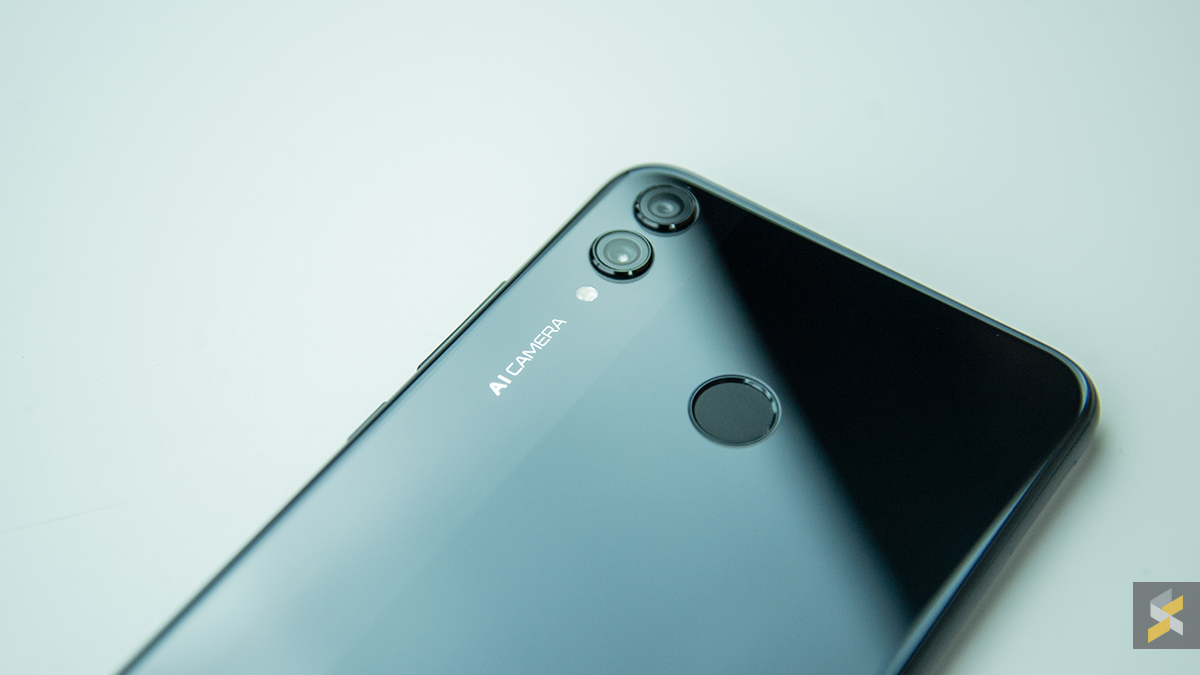
First up: the Honor 8X. Sometimes, Honor and Huawei’s smartphones are released with remarkably similar specs, and the Honor 8X is seemingly a more affordable version of the Huawei Nova 3i. In terms of what stands out, it has a pretty large display for a device in this price-range, with a 6.5″ Full HD+ display. With A 91% screen-to-body ratio, the Honor 8X is also a great device for watching Netflix, or YouTube.
Under the hood, the 8X is powered by the capable mid-range Kirin 710, while gamers will benefit from Huawei’s GPU Turbo. 4GB of RAM and 128GB of storage is certainly decent enough for what it’s priced at—just under RM800. And if you need more storage, it has a dedicated microSD slot, which is a nice touch. This means that you’ll be able to load 2 SIM cards into the 8X, while having a microSD card in your smartphone.
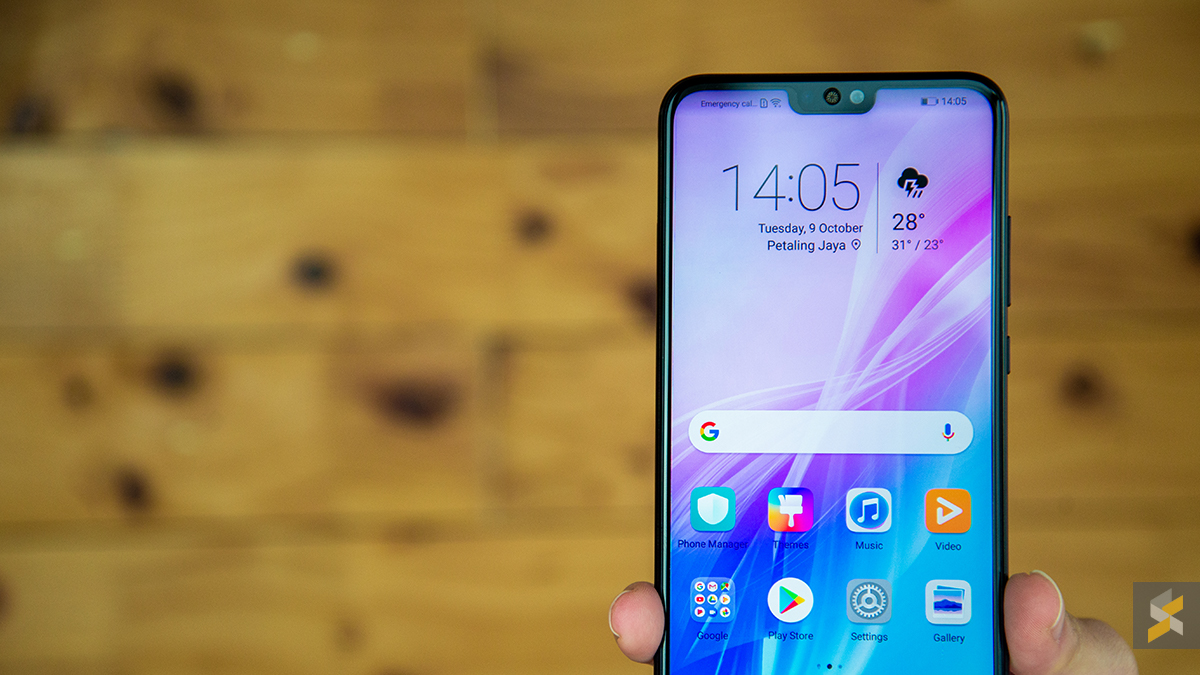
For its camera setup, you have an AI-enabled 20MP primary sensor and a 2MP depth sensor, while the AI-assisted Night Mode allows users to take long-exposure shots in handheld mode. You get a 16MP front-facing camera for selfies, which is housed in the not-too-huge notch upfront.
If you’d like to find out more, here’s a video that should have all the details you need.
Honor 8X—4GB RAM, 128GB storage—RM799
Where to buy:
Online: Lazada, Shopee
Store: Authorised Honor retailers
[nextpage title=”[nextpage title=”Honor 20 Lite”]
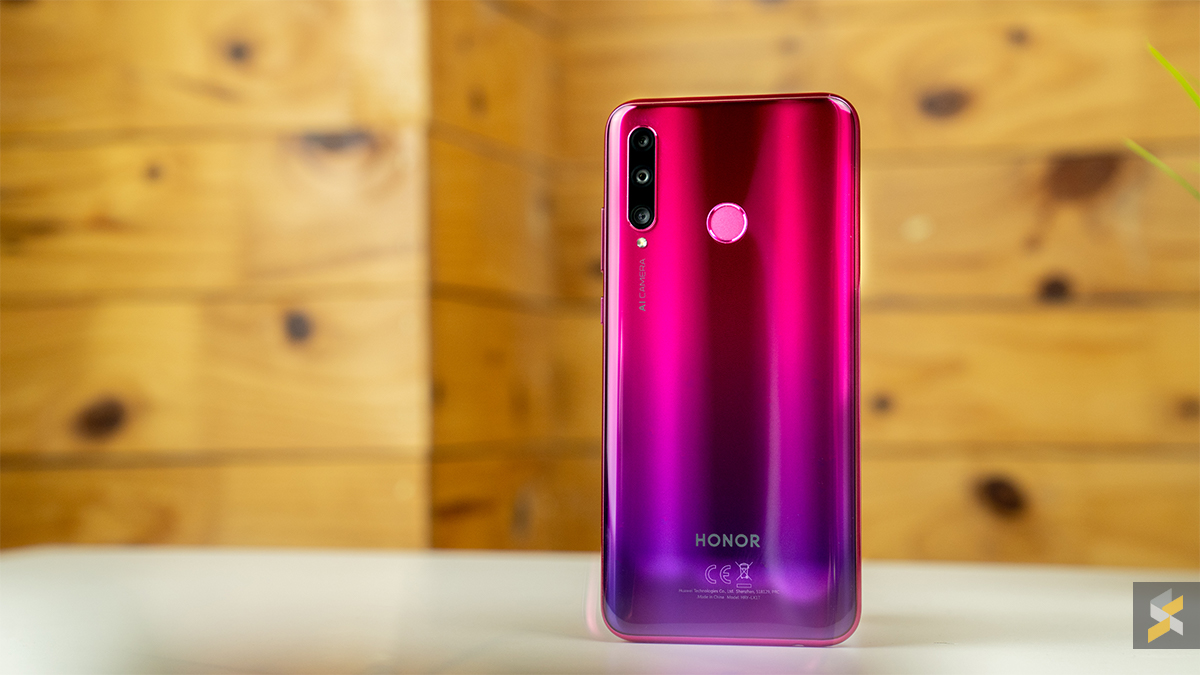
At the time, the Honor 20 Lite was the brand’s first triple-camera smartphone to be released in Malaysia. It can get a little confusing keeping up with smartphone names these days; the Honor 20 Lite is also known as the Honor 10i or the Honor 20i in other markets.
At a price of RM949, the smartphone falls squarely into the midrange bracket—a highly competitive one, at that. But you get a decent all-rounder of a device, with a 6.21″ FHD+ display, along with the teardrop notch that was all the rage at that time.
As mentioned earlier, you get 3 cameras at the rear, with a 23MP f/1.8 main shooter, an 8MP f/2.4 ultra wide-angle lens, as well as a 2MP f/2.4 depth sensor for those bokeh shots. You get the usual (in this time and age) AI camera features, including stabilisation and different scene modes.
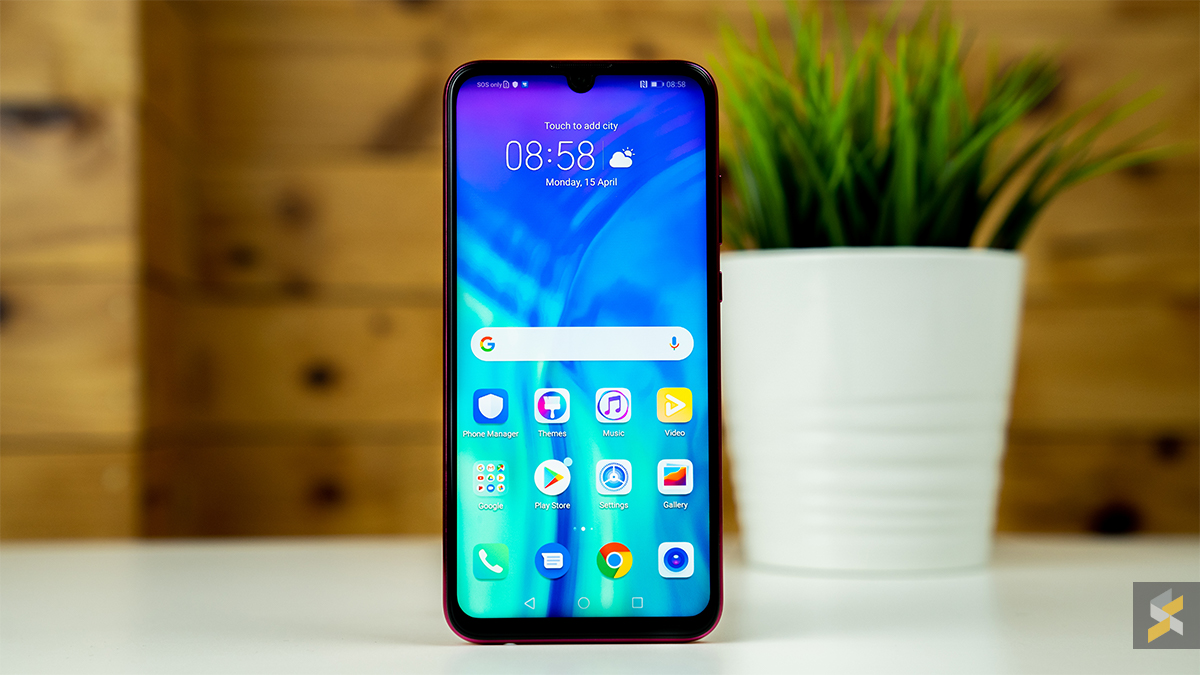
Given its marketing as a photography-centric smartphone, however, the lack of Optical Image Stabilisation (OIS) is rather disappointing. And yes, while you get a 3.5mm headphone jack, the Honor 20 Lite still lacks certain features that would turn this into a genuine contender. It still utilises a microUSB port, for example. The 3,400mAh battery isn’t huge by any stretch, but it’ll do for an average day’s usage.
To find out more, click here.
Honor 20 Lite—4GB RAM, 128GB storage—RM949
Where to buy:
Online: Lazada, Shopee
Store: Authorised Honor retailers
[nextpage title=”Honor Play”]
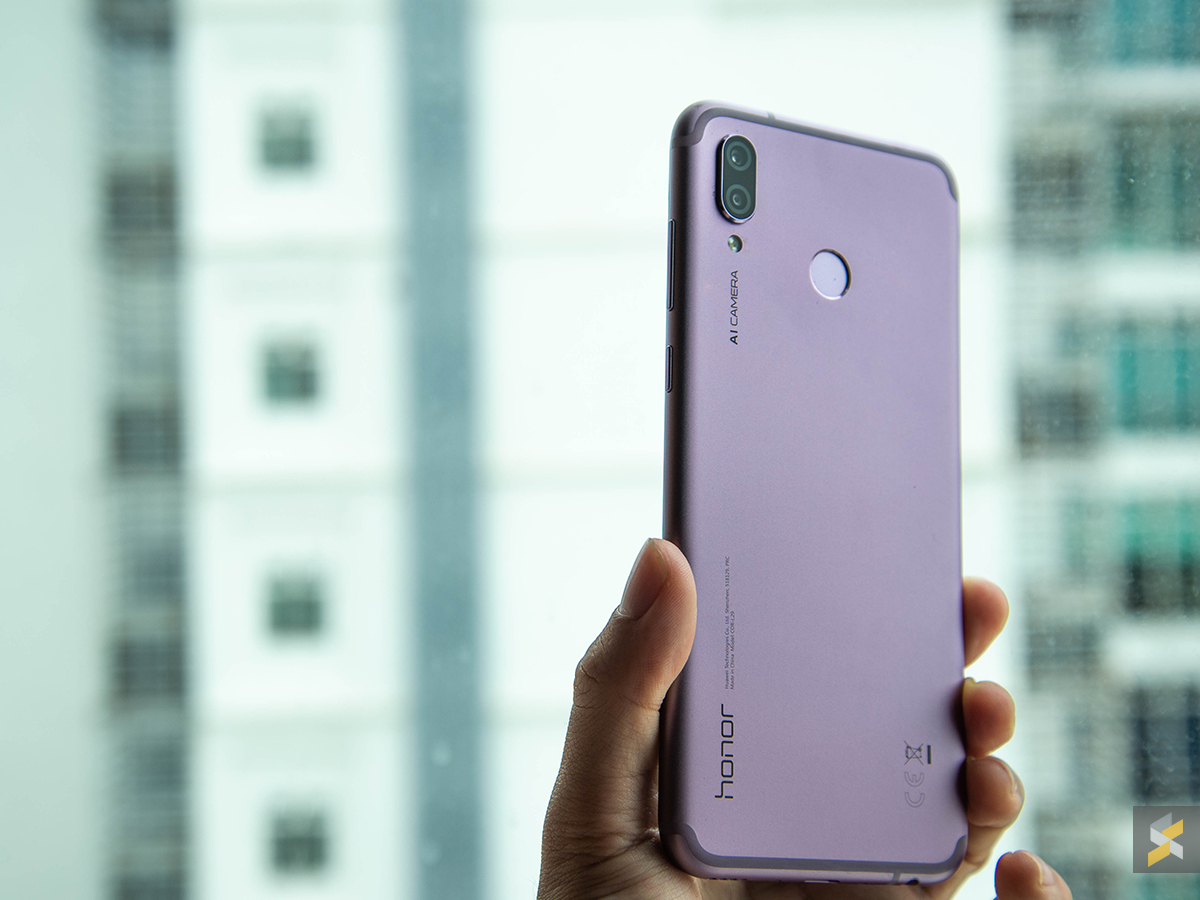
The Honor Play, as per its name, is a smartphone that has a focus on power under the hood. But it’s fallen somewhat under the radar thanks to the hype that the Pocophone F1’s (you can read more about this in our buyer’s guide for smartphones under RM1,500) timely release generated. Nonetheless, with a price cut that places the Honor Play at just below RM1,000, it’s certainly worth considering if you’re looking for a budget gaming phone.
It has a flagship-class Kirin 970, which is mated to 4GB of RAM and 64GB of storage—keep in mind that this is a slightly old SoC, with the upcoming flagships to come with the Kirin 990. In keeping with its gamer theme, Honor has also included its GPU Turbo technology which is supposed to optimise graphic performance for mobile games. Interestingly, there’s an AI-enabled Smart Shock 4D that simulates a dual-shock vibration effect when you’re playing games.
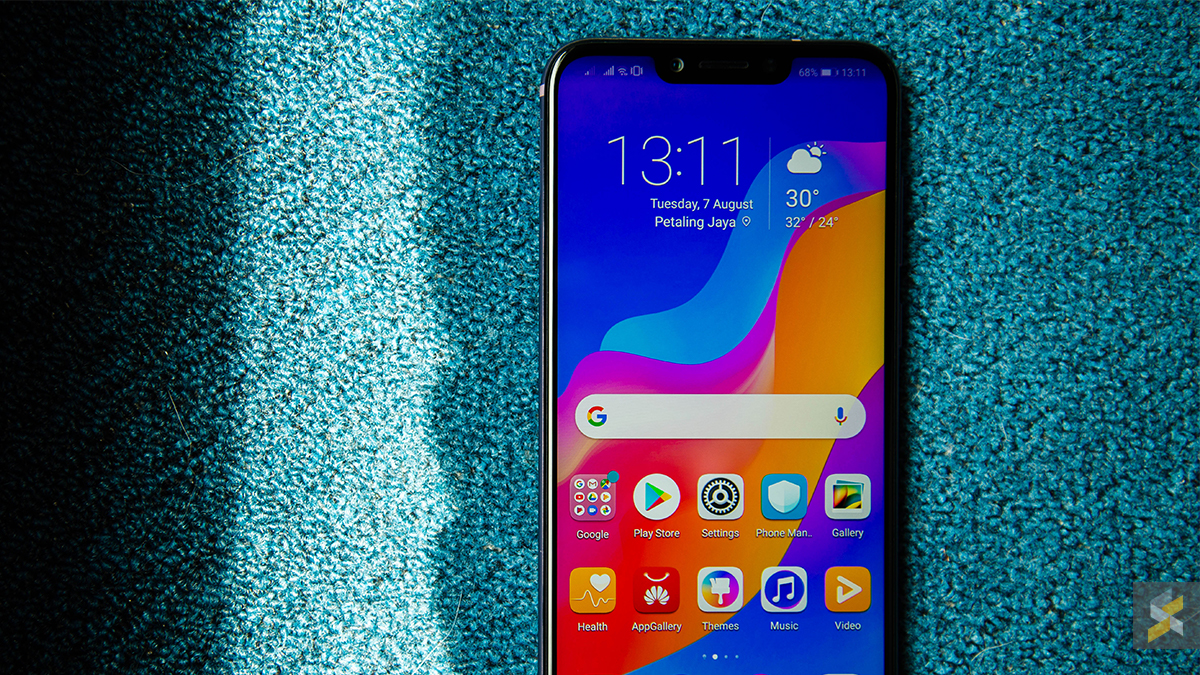
Display-wise, you get a decently-sized 6.3″ Full HD+ IPS notched screen, with a 3,750mAh battery that can be fast-charged via a USB Type-C port. Photo-taking capabilities for the Honor Play is average, with a 16MP f/2.2 + 2MP f/2.4 dual-camera setup at the back with AI features. There’s also a 16MP f/2.0 selfie shooter up front with 3D lighting effects.
As with many smartphones launched last year, it still utilises a rear-mounted fingerprint scanner on a metal body, which feels pretty nice in the hand. Overall, it’s an average phone with a standout SoC, so that’s something you need to consider—not many smartphone in this price range can match it for raw power.
Click here for more details.
Honor Play—4GB RAM, 64GB storage—RM999
Where to buy:
Online: Lazada, Shopee
Store: Authorised Honor retailers
[nextpage title=”Huawei Nova 4e”]
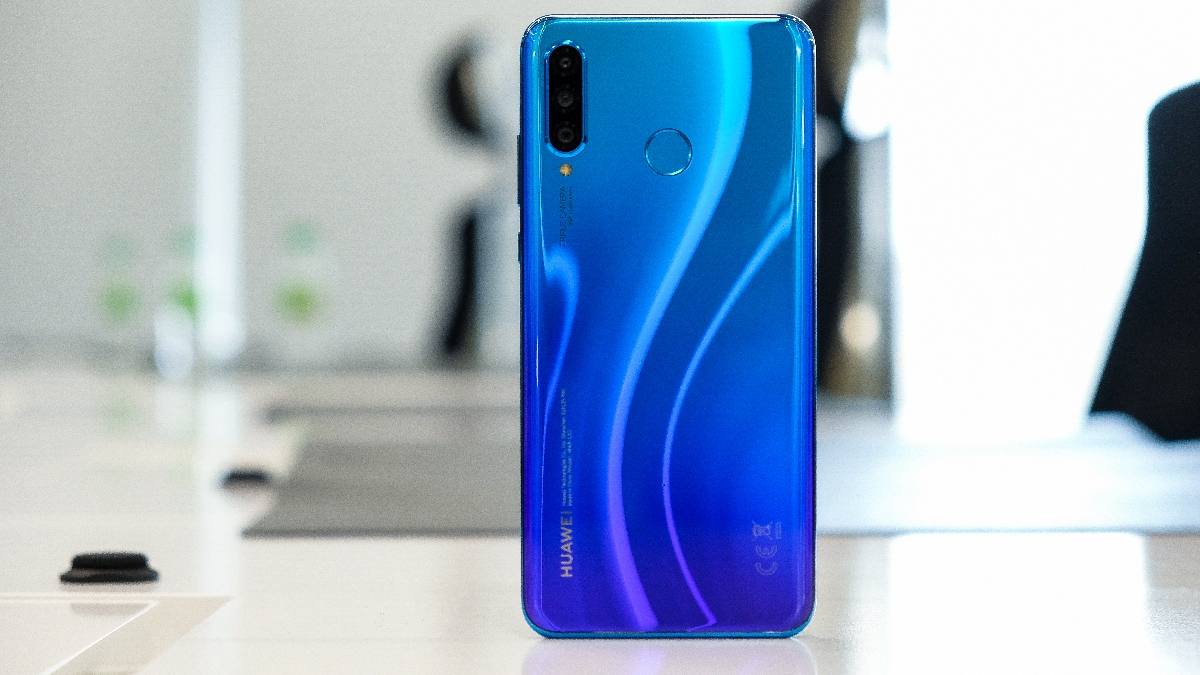
Next up, we have the solid, if slightly unspectacular, Huawei Nova 4e. Huawei has gone with the tried and tested here, with a well-rounded set of features. On the camera side; a 24MP f/1.8 main shooter, an 8MP f/2.2 ultra wide-angle camera, and a 2MP f/2.4 shooter for depth of field make for a versatile setup.
It’s 6.15″ Full HD+ display has a teardrop notch, although it’s somewhat limited by a small-ish battery—3,340mAh—by today’s standards. You can charge the phone via USB-C, while it supports 18W fast-charging. It’s powered by the decent midrange Kirin 710, along with 6GB of RAM and 128GB of internal storage.
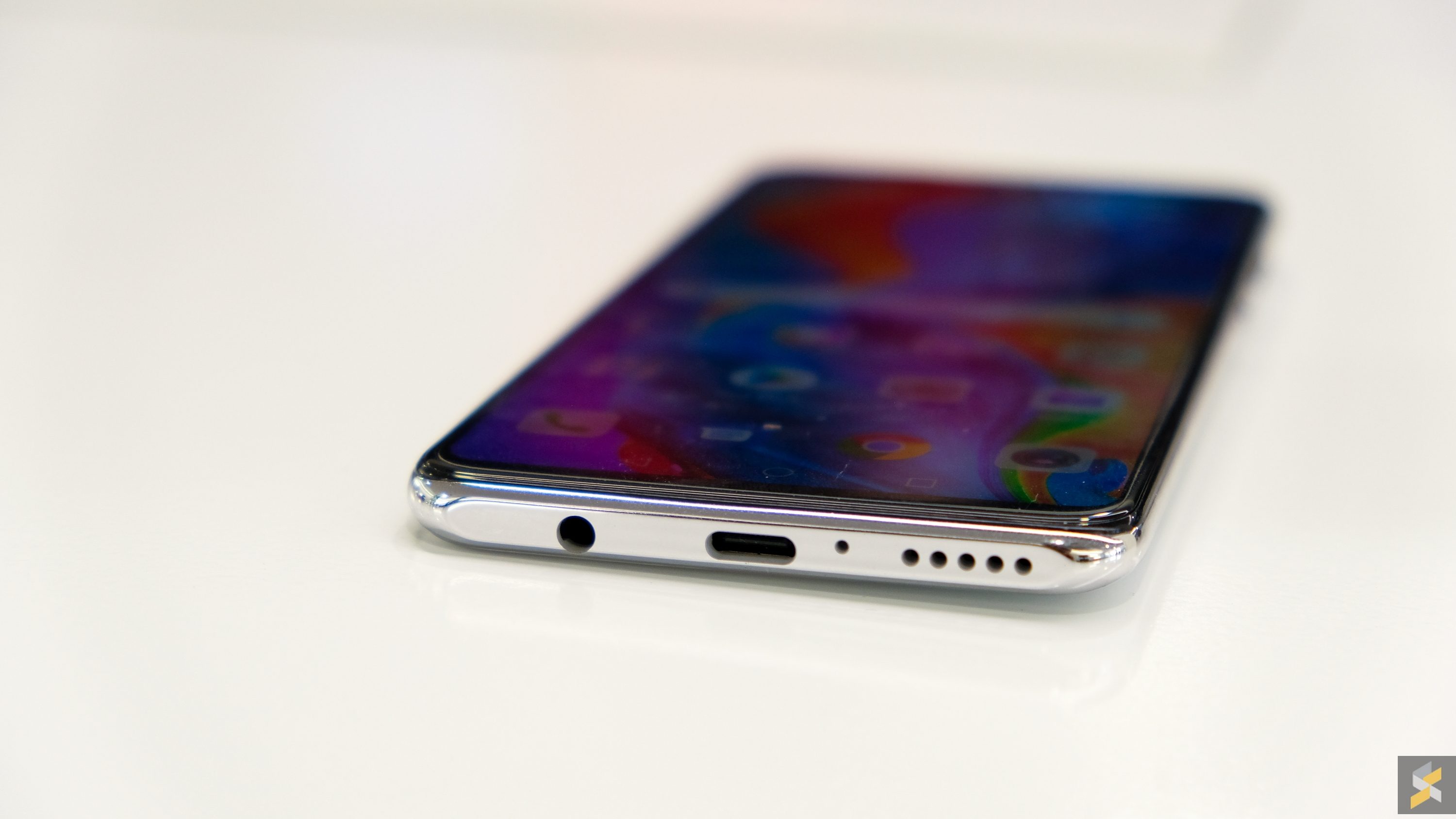
But something that stands out for the Nova 4e, is of course, its selfie camera. It has a 32MP selfie shooter up front, which is a higher megapixel-count than the one on its more expensive cousin, the Nova 4. Overall, a decent enough camera-centric smartphone, although it doesn’t particularly stand out in any obvious way. It’s also great to see yet another headphone jack in this category.
Huawei Nova 4e—6GB RAM, 128GB storage—RM999
Where to buy:
Online: Lazada, Shopee
Store: Authorised Huawei retailers
[nextpage title=”Huawei Y9 Prime 2019″]
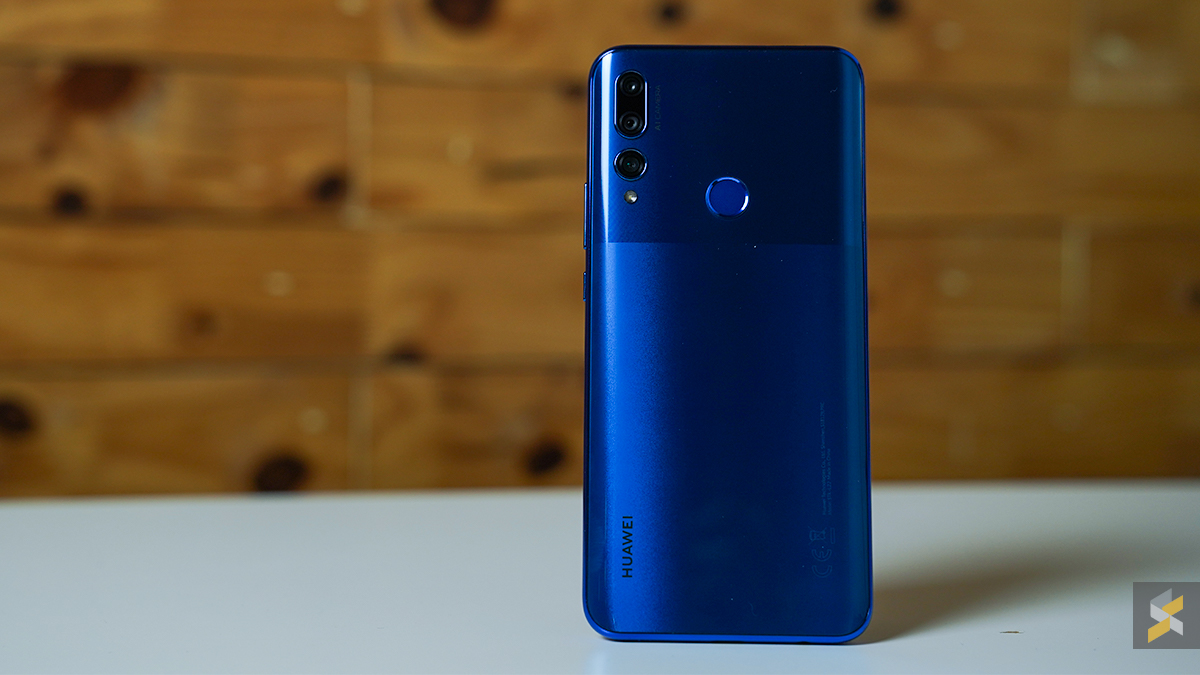
The Y9 Prime 2019 holds the accolade of being the first Huawei smartphone released in Malaysia with a pop-up selfie camera mechanism. It also comes with the new midrange Kirin 710F processor that’s tied to 4GB of RAM.
With a triple-camera setup consisting of a 16MP main camera, an 8MP ultra wide-angle shooter and a 2MP depth camera, Huawei’s latest midrange device doesn’t really stand out in in any particular way.
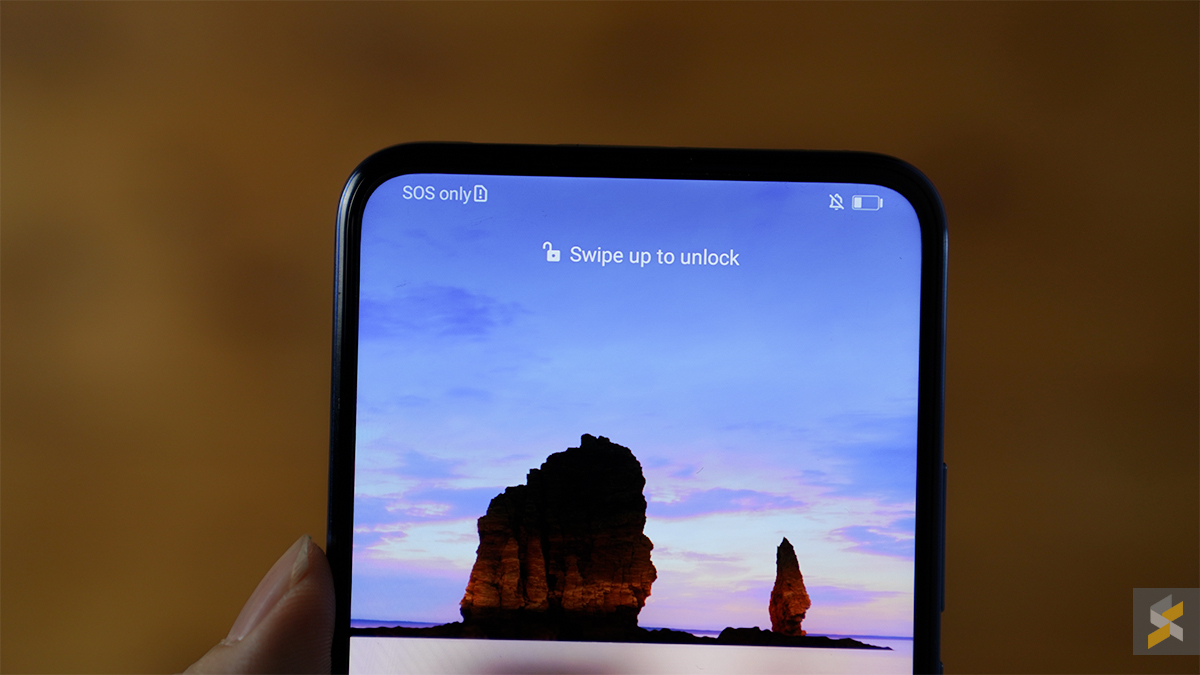
You get a 16MP front-facing camera, which isn’t as good as some of the other smartphones on this list—again, nothing spectacular. But the device does have a great 4,000mAh battery, while USB-C support in this price range is always appreciated.
And the variant being officially sold here is the 128GB storage version, which is expandable via microSD by up to 1TB. Neat.
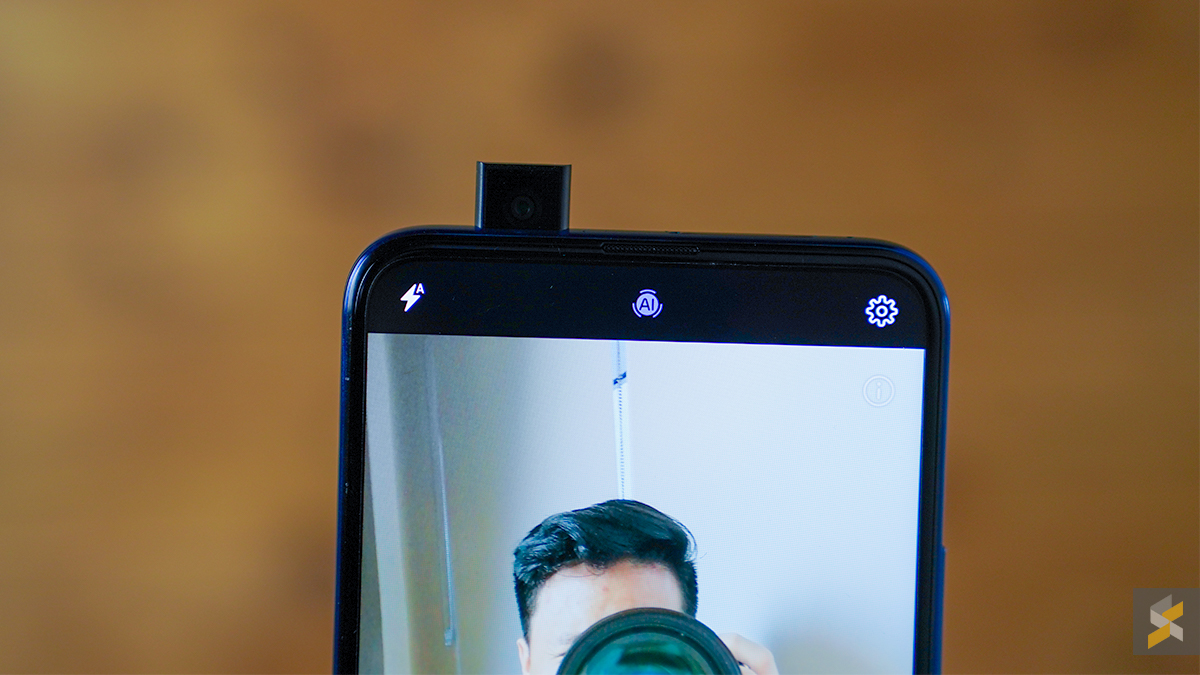
Here‘s a more detailed look at the device.
Huawei Y9 Prime 2019—4GB RAM, 128GB storage—RM899
Where to buy:
Online: Lazada, Shopee
Store: Authorised Huawei retailers
[nextpage title=”Moto G7 Power”]
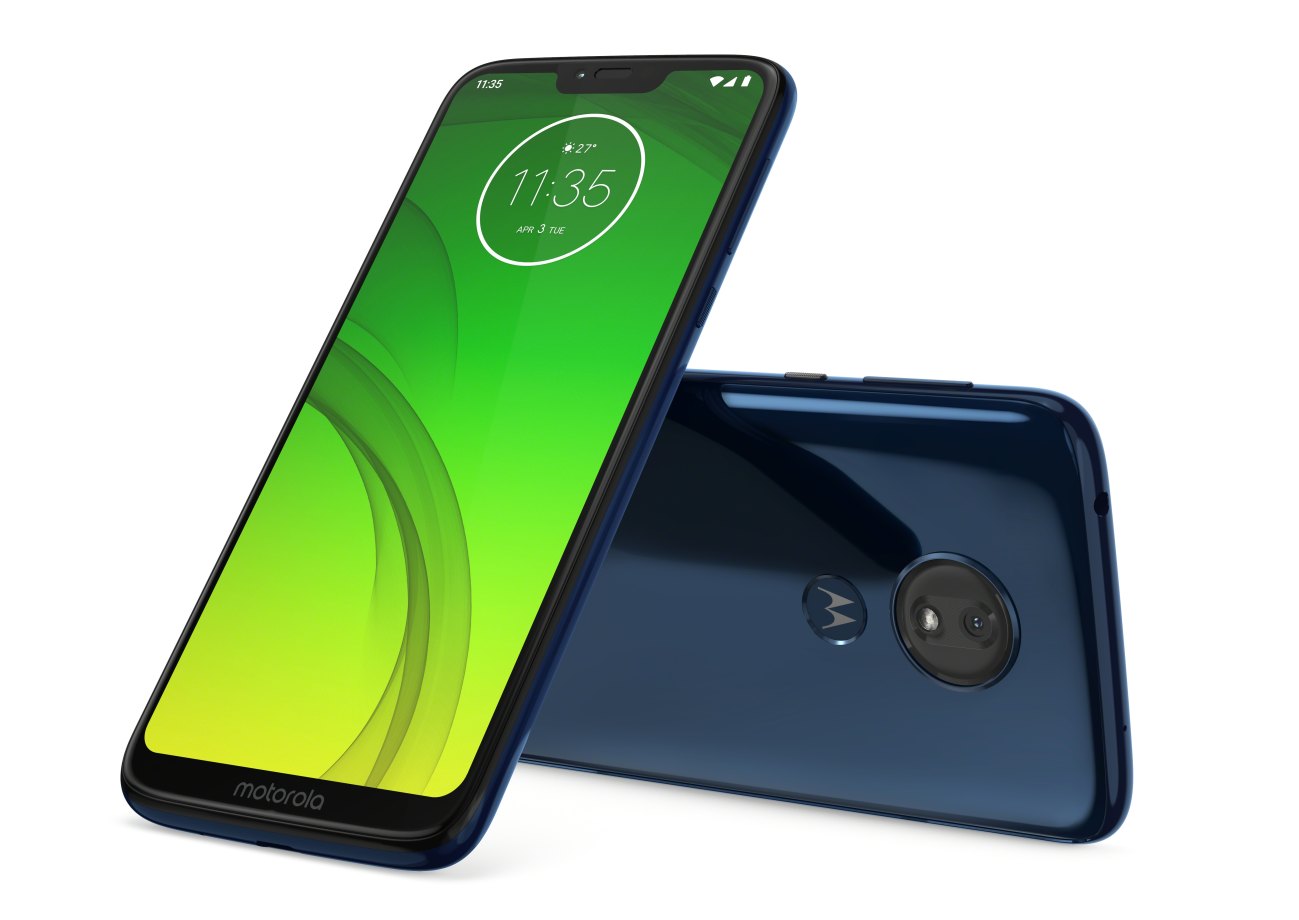
The Moto G7 Power doesn’t really get much attention, with the market saturated with flashier, more feature-packed offerings instead. But it’s still worth considering the G7 Power for a few reasons.
For one, you get a huge battery (5,000mAh), which Motorola claims can last for up to 3 days. Pretty impressive. And something else which makes this phone a worthwhile choice, of course, is the stock Android experience that Motorola’s Moto Experience gives you. Stock Android phones worth buying are scarce, unless you’re considering the Pixel series—much more expensive, and not officially available in Malaysia.
Where Motorola’s device falls short, however, is the internals of the device—although it isn’t super disappointing given that it retails for less than RM700. It’s powered by an average (compared to its rivals mid-2019) Snapdragon 632, while you get 4 gigs of RAM for the device.
In addition to that, you only get ONE 12MP f/2.0 rear camera that’s capable of shooting 4K videos, along with an 8MP f/2.2 selfie camera. That’s where it falls short, in my opinion, but if you’re looking for a vanilla Android experience that has a huge battery, perhaps this could be the phone for you. But in an age where you get wide-angle, telephoto, or depth sensors in most modern smartphones, your photography options will be severely limited with the Moto G7 Power.
If you head over to Motorola’s store on Lazada, it’s currently available at a discounted price of RM669.
Moto G7 Power—4GB RAM, 64GB storage—RM699
Where to buy:
Online: Lazada
Store: Authorised Motorola retailers
[nextpage title=”Nokia 5.1 Plus”]
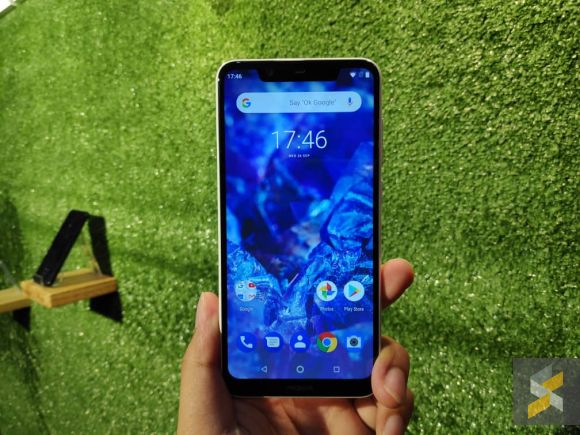
I’ll be utterly frank here: the Nokia 5.1 Plus isn’t really a superb smartphone, even for this price range. But for Android purists, the Nokia smartphone comes with Android One, which means that you get a vanilla Android experience. Right now, you’ve only got a few options in this price bracket, and the Nokia 5.1 Plus is one of them.
The 5.8″ screen only pushes a HD+ resolution, which is essentially a 720p display, although you get a nice 19:9 screen aspect ratio. The 5.1 Plus is also powered by a Mediatek Helio P60 processor, while 3GB of RAM is pretty low for a smartphone in this day and age. 32GB of storage isn’t much either, but at least there’s an option to expand your storage via microSD by up to 400GB.
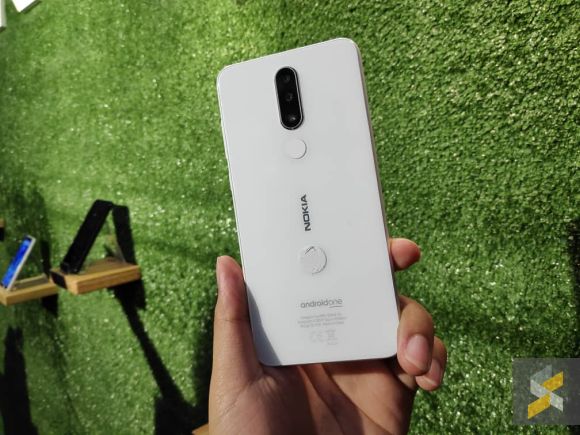
To sustain the smartphone, there’s a 3,060mAh battery (really, really small, to be honest) that charges via USB-C , and the Nokia 5.1 Plus features a 13MP + 5MP dual camera setup with AI features. Overall, I’d say the Nokia 5.1 Plus is held back by pretty poor hardware, although there’s Android One—which is upgradable to Android 9 (Pie), so that’s a plus. I guess.
Oh, and the notch on the screen is huge.
Nokia 5.1 Plus—3GB RAM, 32GB storage—RM599
Where to buy:
Online: Lazada
Store: Authorised Motorola retailers
[nextpage title=”Oppo A7″]
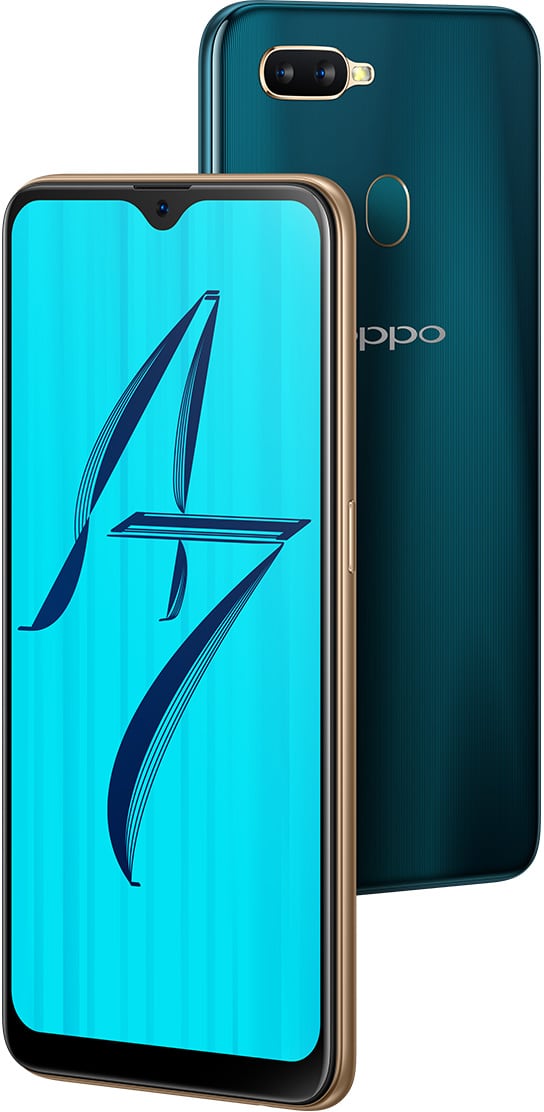
Next up, we have the Oppo A7, which has a pretty big 4,230mAh battery sustaining the device. It has a 6.2″ HD+ IPS display, and is powered by the Snapdragon 450. 64GB of storage and 4GB of RAM is certainly sufficient, while the dedicated microSD slot (up to 256GB) is a pretty nice addition.
For photography, the camera is a relatively basic setup: a 3MP, f/2.2 main sensor, along with a 2MP depth sensor for bokeh effects. You also get a HDR-enabled 16MP selfie camera housed in the water-drop screen as well—there’s also an actual 3.5mm headphone jack included on the device.
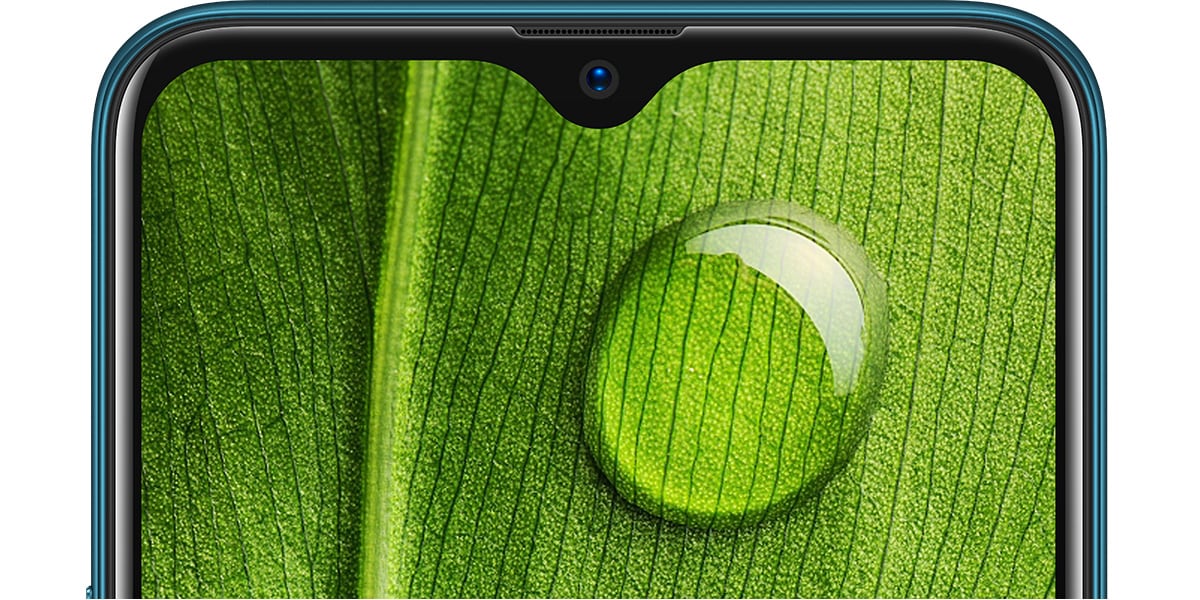
Overall, not really the best device to get. The Snapdragon 450 is pretty underpowered if you compare it to some of the competitors on this list—especially if you consider the price tag of the Oppo A7.
Oppo A7—4GB RAM, 64GB storage—RM799
Where to buy:
Online: Lazada, Shopee
Store: Authorised Oppo retailers
[nextpage title=”Oppo F11″]
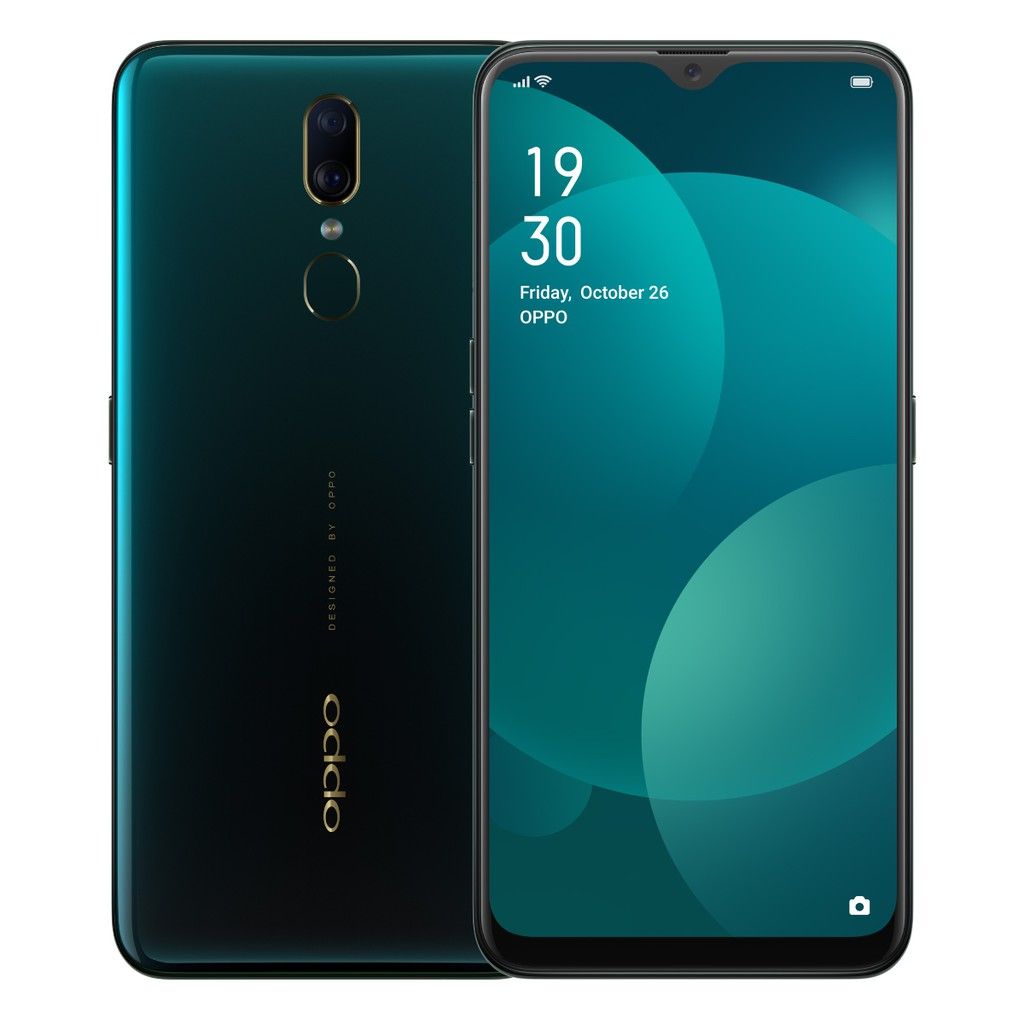
The Oppo F11 is essentially the F11 Pro, without the complicated motorised selfie-camera, if that’s not your cup of tea. The base model with 4GB of RAM and 64GB of storage retails for just under RM1,000, with a 6.5″ water-drop screen that pushes a Full HD+ resolution. For the selfie camera, you get a 16MP sensor housed in the notch, but its rear-camera setup is pretty decent at this bracket.
It’s a 48MP + 5MP dual-camera combo at the rear, while you get the same MediaTek Helio P70 as the F11 Pro packs. As for storage, you can expand the 64GB of onboard storage with a microSD (hybrid sim tray), up to 256GB. The F11 also packs a 4,020mAh battery, which is certainly decent at this price point.
To find out more, click here.
Oppo F11—4GB RAM, 64GB storage—RM999
Where to buy:
Online: Lazada, Shopee
Store: Authorised Oppo retailers
[nextpage title=”Realme 3 Pro”]
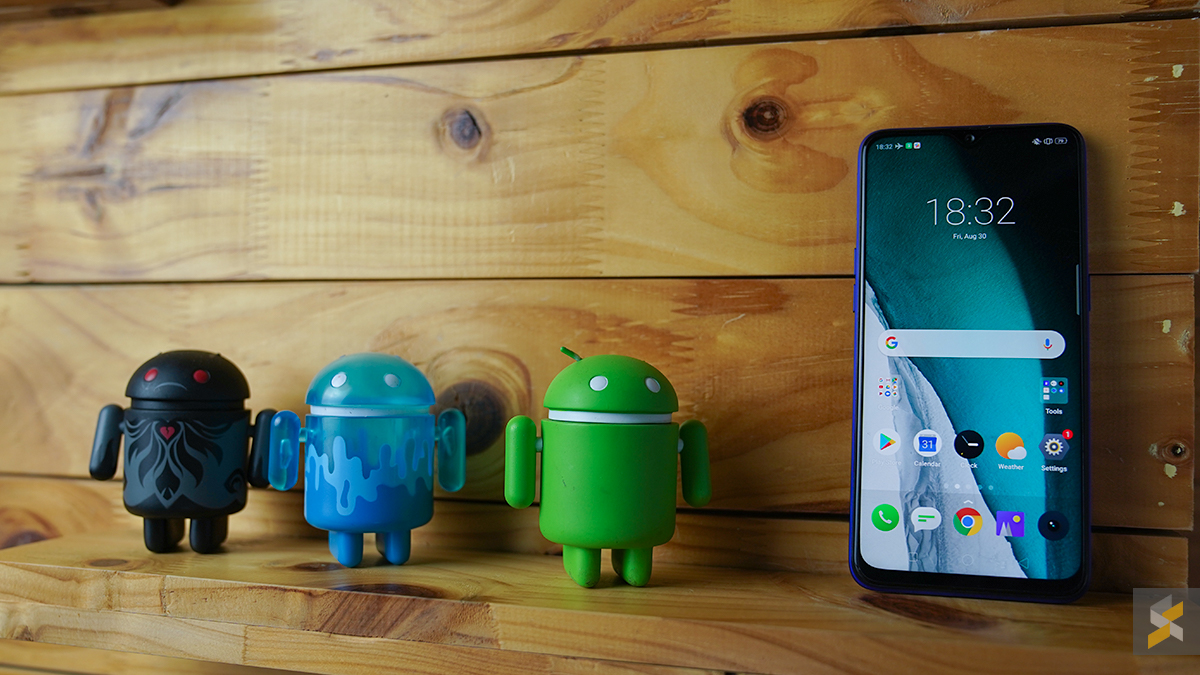
The Realme 3 Pro is another attempt from the Chinese smartphone makers to get a slice of the midrange market. Following relative success with previous models, the Realme 3 Pro is yet another decent device to consider if you’re looking for something that won’t hurt the coffers too much.
Let’s consider this; for RM999 (6GB/128GB model), you’re getting a smartphone that Full HD+ Corning Gorilla Glass 5 LCD display, while you have the upper-midrange Snapdragon 710 powering it. The Realme 3 Pro does well in the battery/charging department, with VOOC 3.0 Flash Charge tech (20W charging) mated to a 4,045mAh battery.
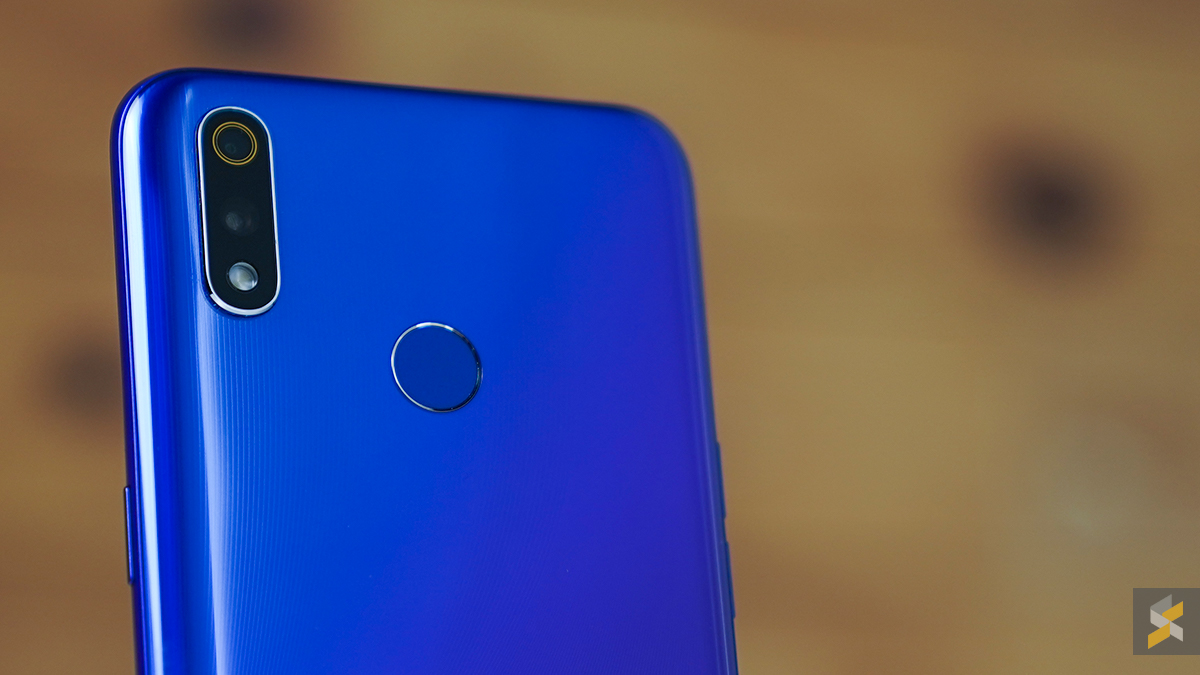
The camera’s capabilities are decent—you’ve got a 16MP Sony IMX519 main sensor at the rear with an f/1.7 aperture lens that’s backed up by a 5MP f/2.4 depth sensor. This smartphone also supports features like Ultra HD and Super Nightscape (which should help with low-light shots).
No giant notch, but no punch holes or pop-up camera either; a 25MP selfie camera that’s paired with AI beautification feature is good enough for most people, I’d presume.
Realme 3 Pro—4GB RAM, 64GB storage—RM899
Realme 3 Pro—6GB RAM, 128GB storage—RM999
Where to buy:
Online: Lazada, Shopee
Store: Authorised Realme retailers
[nextpage title=”Redmi Note 7″]
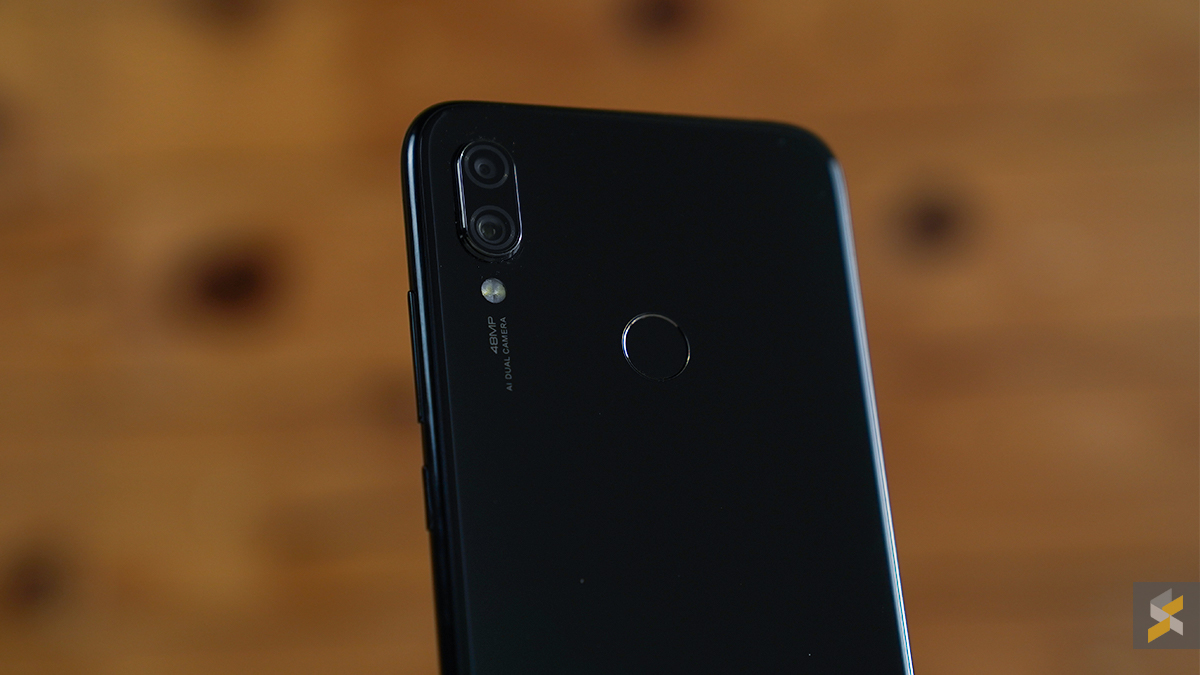
The Redmi Note 7 comes in 3 variants, but for the purposes of this guide I’ll only be discussing the upper 2 versions—both come with 4GB of RAM. As with all of Redmi’s products, it’s a bang-for-buck offering here, although there are a few drawbacks.
A 6.3 Full HD+ display is decent, while it runs on the late-model Snapdragon 660. You shouldn’t run into any issues running games on the SD660 if you’re a casual gamer, although it’s probably not the phone for you if you’re looking for raw power in a smartphone.
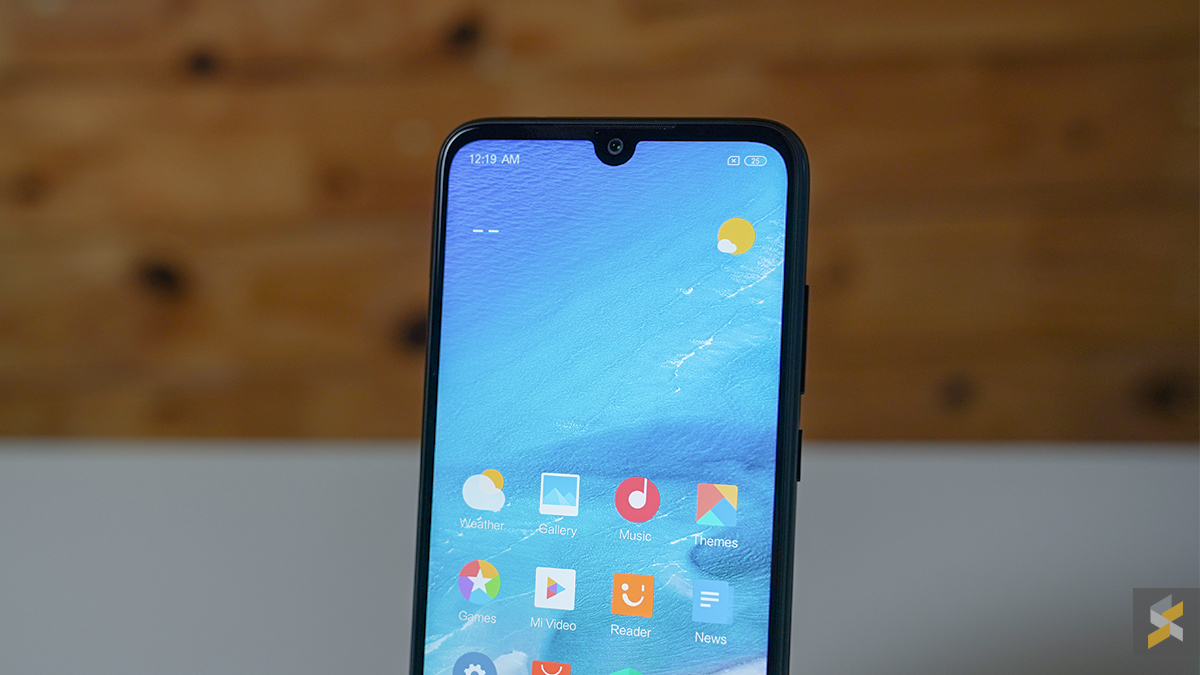
It’s a dual-camera setup for photos, but the Redmi Note 7’s 48MP + 5MP pairing is certainly a great camera at this price. Then again, you won’t have the versatility of an ultra wide-angle lens, or even a telephoto lens. The selfie camera is an average 13MP, as well.
While the device supports Quick Charge 4.0+, you’ll need to get a separate 27W power brick to fast-charge the Note 7’s 4,000mAh battery. But what I do like is the IR blaster that Redmi has included in the device, while the 3.5mm headphone jack is always appreciated.
For more details, click here.
Redmi Note 7—4GB RAM + 64GB storage—RM799
Redmi Note 7—4GB RAM + 128GB storage—RM949
Where to buy:
Online: Lazada, Shopee
Store: Authorised Xiaomi retailers
[nextpage title=”Samsung Galaxy A30″]
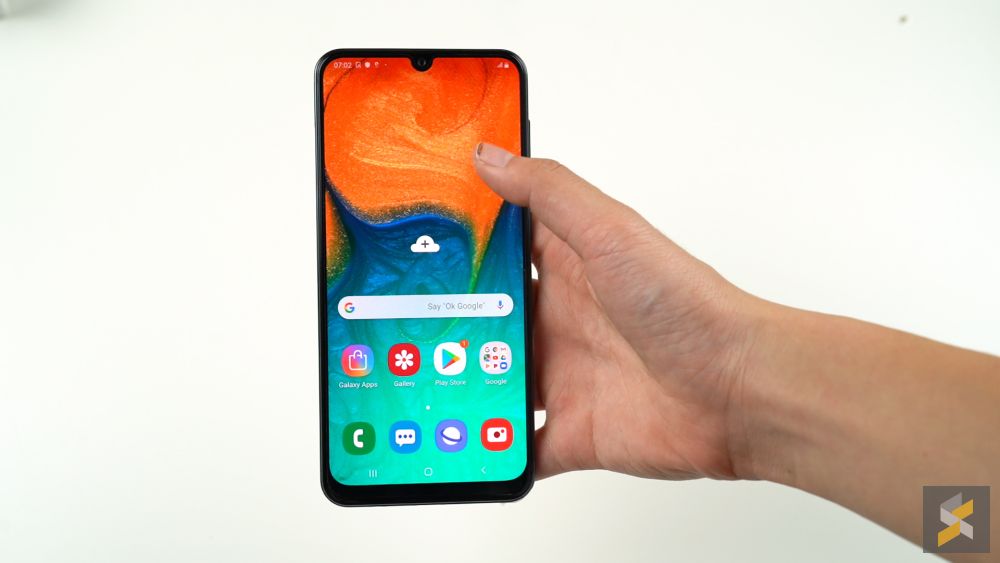
The Galaxy A30 is one of Samsung’s midrange devices, and to be honest with you, there’s one thing that makes it a contender for a strong podium finish: its 6.4″ Full HD+ Super AMOLED display. This, for me, is something that you won’t even find on many smartphones that go for up to RM1,500, and is certainly something worth considering.
Besides that, the A30 comes with Android 9.0 (Pie) out of the box, and has a dedicated microSD slot of up to 1TB, which is way more than you’d ever need; it’s available for RM799. As for cameras, the A30 gets a dual-camera setup at the back where you’re getting a 16MP f/1.7 aperture wide camera with a 5MP f/2.2 aperture ultra wide-angle secondary camera. For selfies, the A30 sports a 16MP f/2.0 selfie shooter.
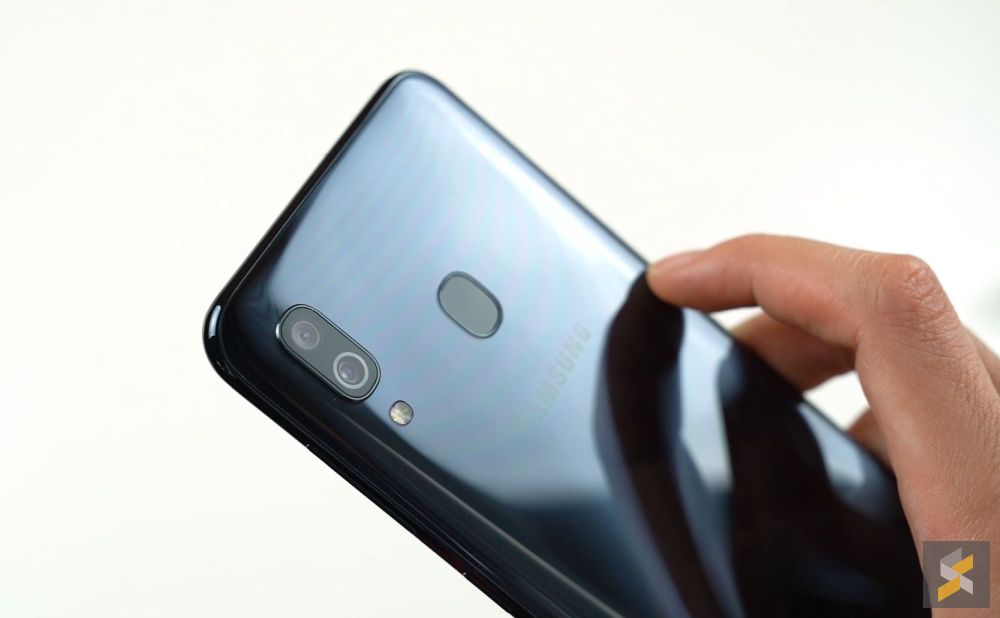
Under the hood, the A30 is powered by Samsung’s Exynos 7904 processor inside that’s mated to 4GB of RAM and 64GB of internal storage—enough for your daily tasks, but probably not the best option in this list for your gaming needs.
Samsung Galaxy A30—4GB RAM + 64GB storage—RM799
Where to buy:
Online: Lazada, Shopee
Store: Authorised Samsung retailers
[nextpage title=”Samsung Galaxy M20″]
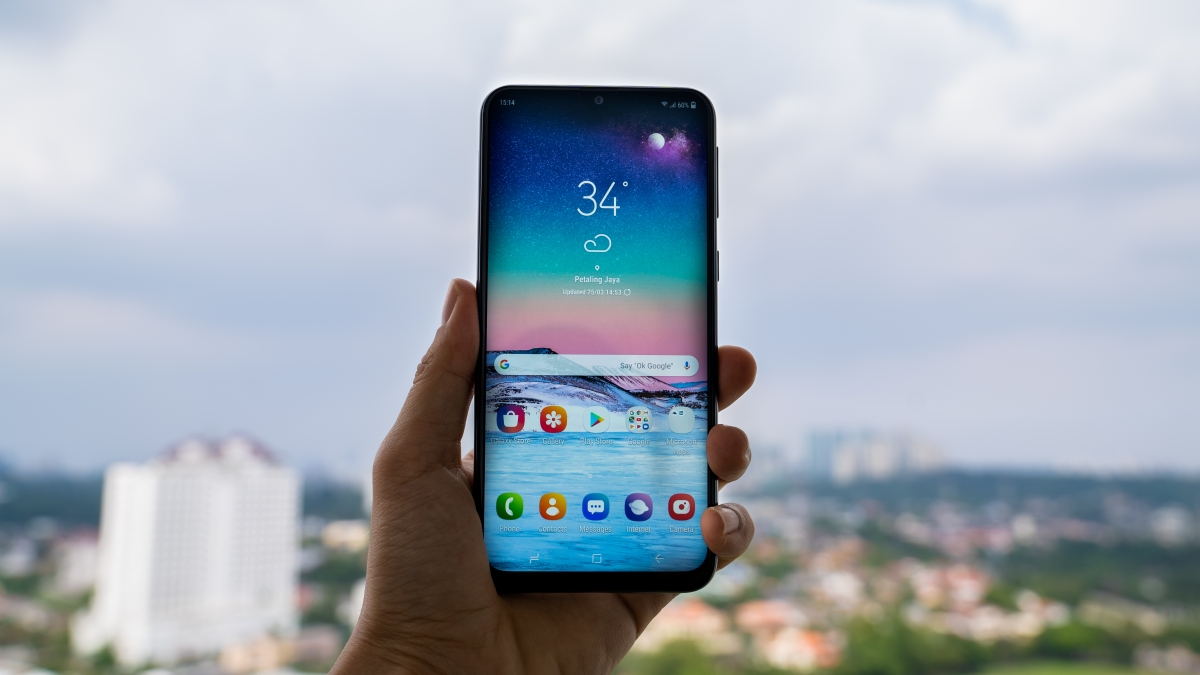
Sort of an honourable mention, but Samsung’s Galaxy M20 makes an appearance on this guide due to its large 5,000mAh battery which can be charged at 15W via USB-C. It’s also the first Samsung smartphone to feature the Infinity-V display, which is essentially a water-drop notched display—this gives the M20 an almost all-screen appearance.
Its 6.3″ display isn’t Super AMOLED, which is a touch disappointing, while it runs on a mid-range 14nm Exynos 7904 Octa-Core processor. The M20 comes with a respectable 4GB of RAM and has 64GB of storage which is expandable via microSD. It’s a dual-shooter at the rear—a 13MP f/1.9 + 5MP ultra wide-angle camera setup, while the front gets an 8MP f/2.0 selfie shooter.
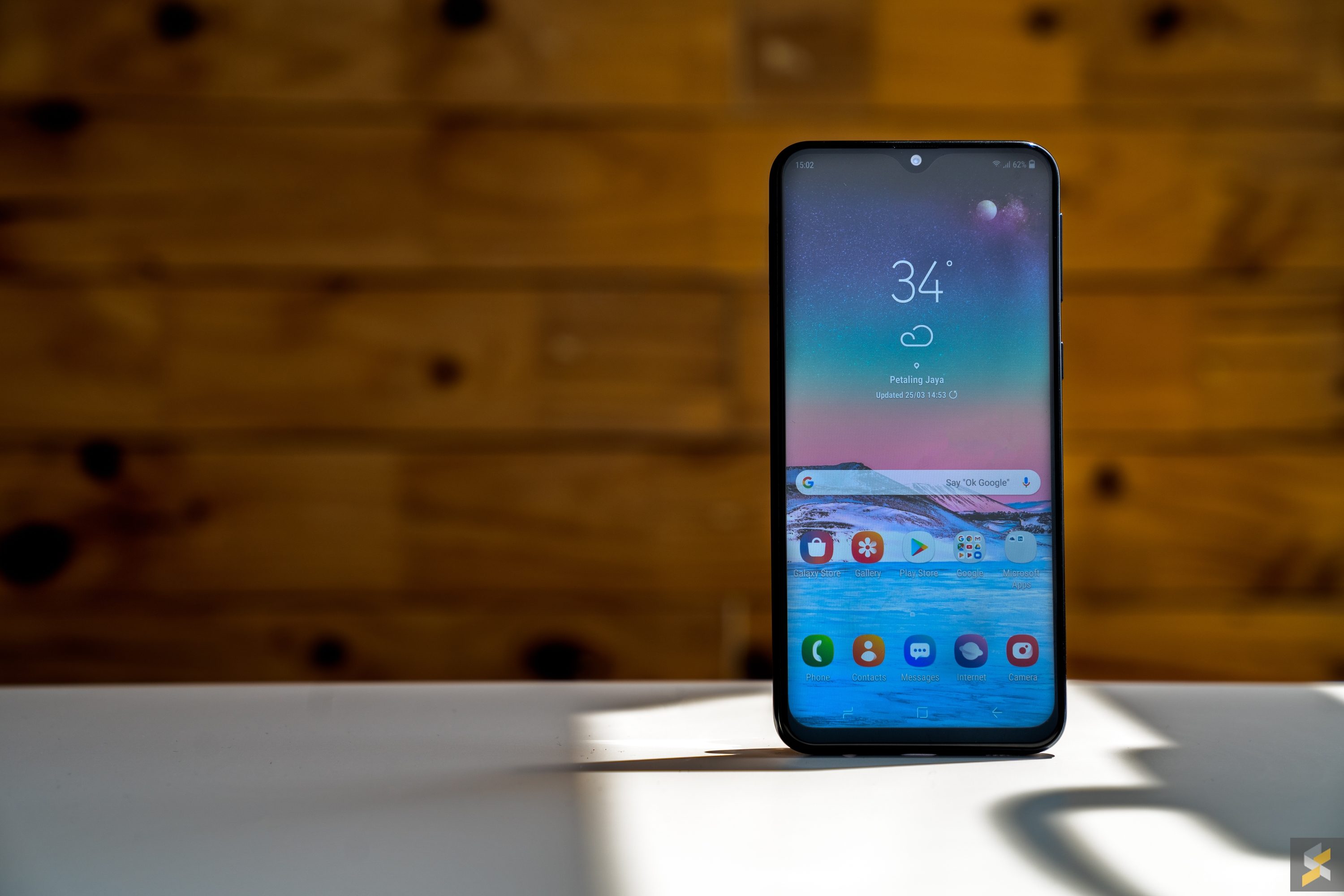
Honestly, it’s not the best smartphone you’re gonna see, even in the budget–midrange price bracket, but for RM799, you get a pretty large screen with a subtle notch, respectable specs under the hood, and that gigantic battery.
Samsung Galaxy M20—4GB RAM, 64GB storage—RM799
Where to buy:
Online: Lazada, Shopee
Store: Authorised Samsung retailers
[nextpage title=”Vivo V11″]
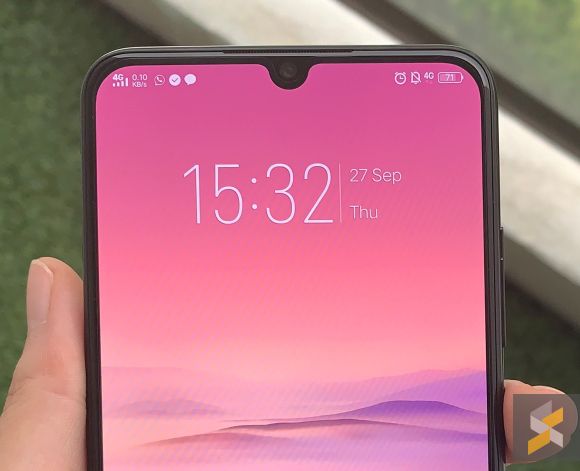
Another late-2018 model, the Vivo V11 has recently seen its price drop to the sub-RM1,000 range, which might make it a worthwhile consideration for some. If you’re in the market for a great display and you don’t want to break the bank for it, the V11 certainly has quite a bit going for it.
It packs a 6.41″ Full HD+ Super AMOLED display in a 19.5:9 aspect ratio and it runs on a Qualcomm Snapdragon 660 AIE processor. Along with 6GB of RAM and 128GB of internal storage, you’re getting a vibrant screen that outstrips many other smartphones in this price bracket.
But on the flip-side, the V11 still uses a microUSB port, while it only has a dual-camera setup, along with a 25MP f/2.0 selfie camera housed on the tiny notch. For the main cameras, you get a 12MP f/1.8 + 5MP f/2.4 camera combo with AI photography features.
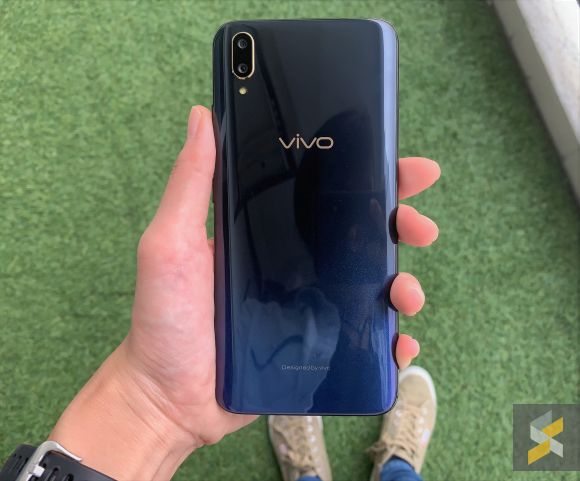
But at a revised price of RM899, the V11 is certainly a smartphone to consider. Other flagship-esque features include an in-display fingerprint sensor, although the 3,400mAh battery powering the device isn’t all that great.
Vivo V11—6GB RAM, 128GB storage—RM899
Where to buy:
Online: Lazada, Shopee
Store: Authorised Vivo retailers
[nextpage title=”Vivo Y17″]
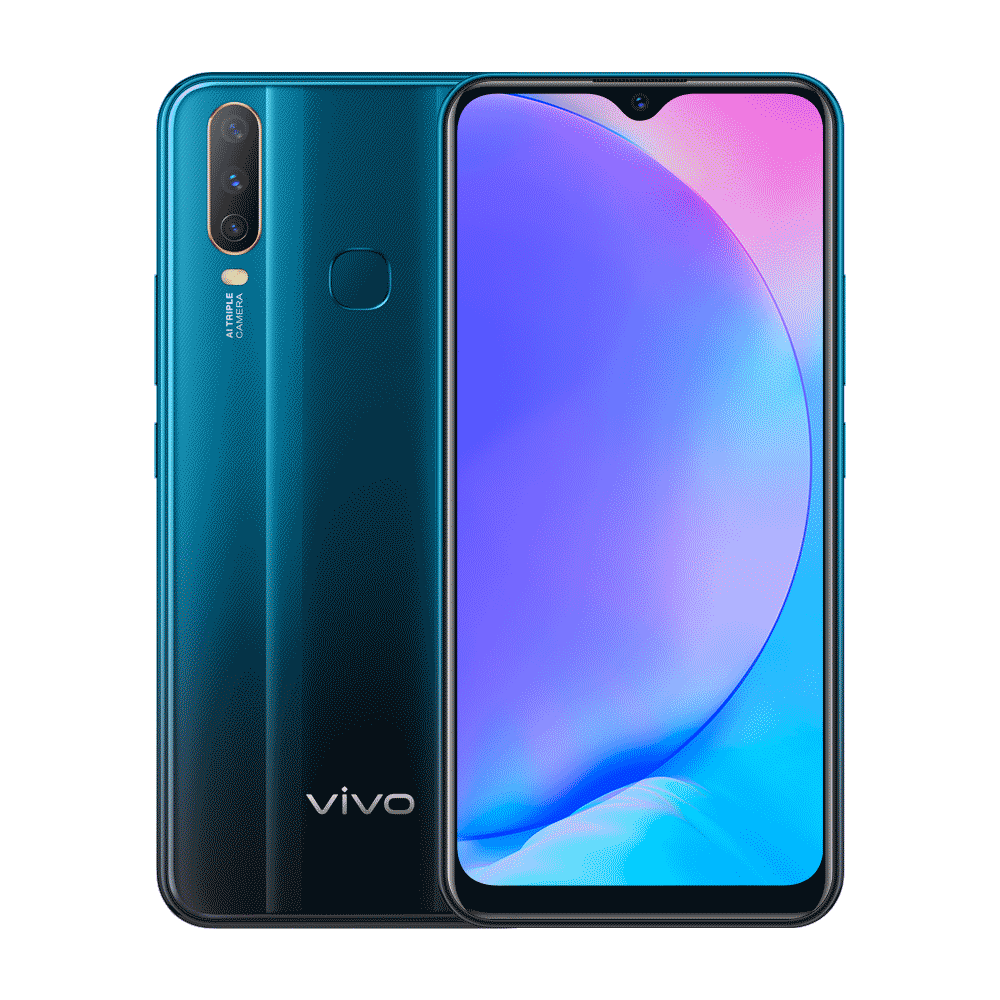
As I’ve repeated many times in this guide, versatility is probably the one thing that makes or breaks smartphones in this range. And the Vivo Y17 is certainly versatile, if nothing else. For less than RM1,000, the main plus points here are the 5,000mAh battery, as well as a reasonable triple-camera setup (13MP f/2.2, 8MP f/2.2 wide-angle, 2MP f/2.4 depth sensor).
It’s display is called the Halo FullView display, with a minimalistic V-shaped notch at the top that also houses the 20MP f/2.0 selfie camera. But that’s about it. The phone still uses a microUSB slot, and the display on the Vivo Y17 is only HD+. The Y17 is running on an average-ish MediaTek Helio P35 processor with 4GB of RAM and 128GB of storage.
The display, in particular, can be a dealbreaker for some, although the large battery size and versatile camera setup might still come in handy for those who require it. Of course, you also get a big 128GB storage option at the RM1,000 price mark, which is also a big benefit for some.
Click here for more information.
Vivo Y17—4GB RAM, 128GB storage—RM999
Where to buy:
Online: Lazada, Shopee
Store: Authorised Vivo retailers
[nextpage title=”Xiaomi Mi A3″]
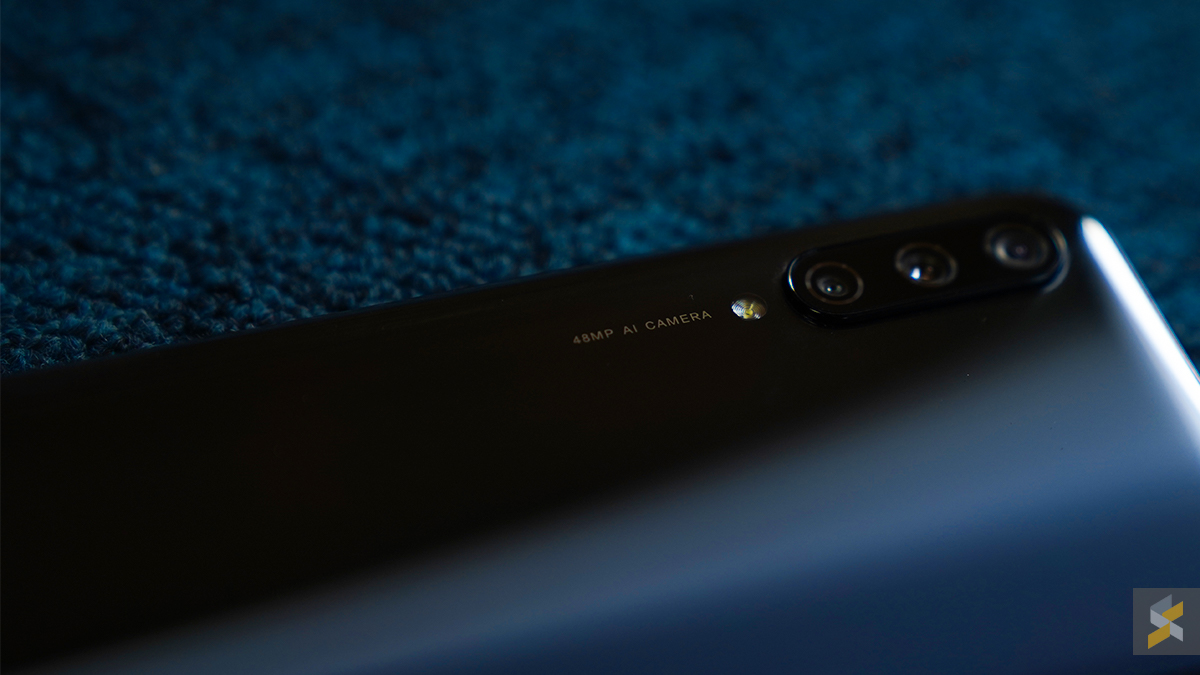
The latest iteration in Xiaomi’s Android One series of smartphones is here, and it’s one that has undoubtedly split opinions everywhere, including in the SoyaCincau office. The first thing that everyone, of course, points out is the HD+ display—basically, a 720p display.
This is arguably significant, as it marks not only a lower resolution screen than competitor devices, but an actual downgrade from its predecessor, the Mi A2. In fact, even the first Mi A1 came with a Full HD display, so it’s a little hard to understand the thinking behind this particular move.
Perhaps this is due to the fact that Xiaomi has only included in-display fingerprint scanners on AMOLED displays so far, but decided to keep costs low by using a 720p display instead of a Full HD one.
But putting that aside, the Mi A3 is actually still a decent enough phone, depending on the what you’re keen on in a smartphone. Of course, you’re treated to a stock Android experience, which may or may not be your thing. Personally, I’m a big fan. This is, after all, one of the few devices that you can get vanilla Android on besides the more expensive (and locally unavailable) Pixel series.
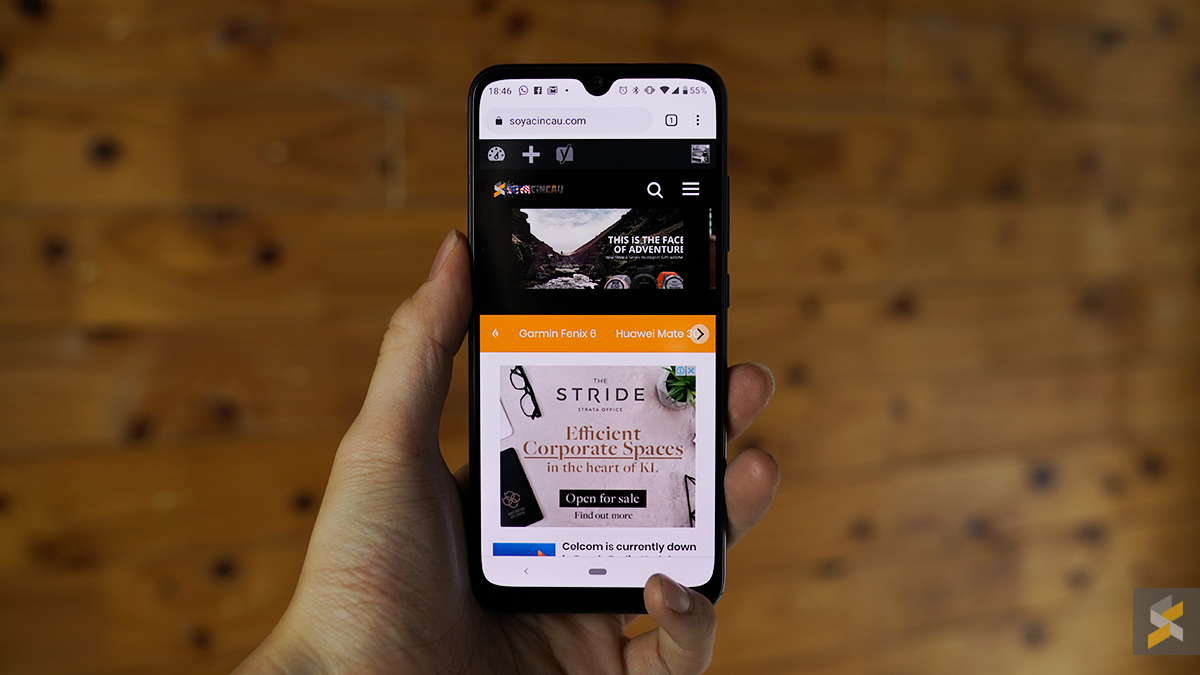
The HD+ display isn’t all that bad, actually. It’s a 6.088″ AMOLED screen, while you’re getting Qualcomm’s recently-launched Snapdragon 665 processor. A combination of 4GB and 64GB of memory and storage isn’t anything to shout about, but its triple-camera setup is decent enough by today’s standards—a 48MP main camera, 8MP ultra wide-angle shooter and 2MP camera for depth effects.
In keeping with expectations, the Mi A3 has a 4,030mAh battery, which is a 34% increase over the Mi A2. Thankfully, the device supports 18W fast-charging, although the bundled power brick that we received with the device is a 10W standard charger instead.
Good news for traditionalists (if there were ever such a thing for smartphones), the Mi A3 will indeed come with an headphone jack. At the time of writing, the Mi A3 isn’t yet officially available in Malaysia, although its release date here will be the 31st of July 2019.
A great phone for stock Android enthusiasts, although I must say that I fall within the camp of those that think the 720p display is a deal-breaker. But if you aren’t too bothered about display resolution per se, it’s still a great Android One device with a solid camera setup, a large battery, and of course, a headphone jack.
Xiaomi Mi A3—4GB RAM, 64GB storage—RM899
Xiaomi Mi A3—4GB RAM, 128GB storage—RM999
Where to buy:
Online: Lazada, Shopee
Store: Authorised Xiaomi retailers
[nextpage title=”Comparison table”]

Now that we’ve gone through each device in this guide, here’s a comparison table to give you a side-by-side spec list of each device on this list. There’s really no wrong choice here, but the table above should give you an idea of which smartphone to choose depending on your specific needs.
For example, if you’re keen on using your device for media consumption—your Netflix, YouTube, movies, etc.—it’d be wise to get a smartphone with a Full HD+ display. And of course, an AMOLED screen is recommended, with generally more vibrant displays over LCD screens. Perhaps something like Samsung’s Galaxy A30 or the Vivo V11 might be a good choice.
Or if your main focus is gaming, you’d be best advised to get a smartphone with a solid processor under the hood. Skim through the table above, and you’ll notice that the only smartphone in the list to have a genuine flagship-class processor is the Honor Play, with Huawei’s Kirin 970 under the hood. This is also paired with GPU Turbo, which helps optimise gameplay experience, so that’s worth considering. You can also consider Qualcomm’s upper mid-range Snapdragon 7xx SoCs, equipped on devices like the Realme 3 Pro.
Perhaps you’re looking for a stock Android experience, then Android One devices are ideal for you. Need a long-lasting device? 4,000mAh-sized batteries and above, if you ask me. Some of the better camera smartphones include the Redmi Note 7 and the Xiaomi Mi A3, while look for smartphones with ultra wide-angle lenses for a little versatility in your shots.
Most of the smartphones included in this list are pretty current, so even if some of the devices in this guide are on Android 8.0 (Oreo) out of the box, you should be able to update most of them up to Android 9.0 (Pie). Staying up to date on the latest Android versions fixes things like bugs, while including the latest of Google’s security patches.
If you’ve gone through every listing here, scoured the comparison table above, and still can’t make up your mind, no worries. In the next page, I’ll be listing the editor’s choice—3 of the best overall smartphones you can get under RM1,000. I’ll also be giving some honourable mentions to certain smartphones which didn’t make the cut, devices that still offer something a little different.
[nextpage title=”Editor’s choice”]
We’ve made it! If you’ve gone through each listing above, kudos! Now you’ll have a better idea of the budget options we have available in 2019, and you’ll be better equipped to make a decision (or to give some advice) for yourself. But if you’ve skipped ahead to the editor’s choice, no worries—here are what we think the 3 best smartphones below RM1,000 are.
#1 Realme 3 Pro: the best overall budget smartphone right now
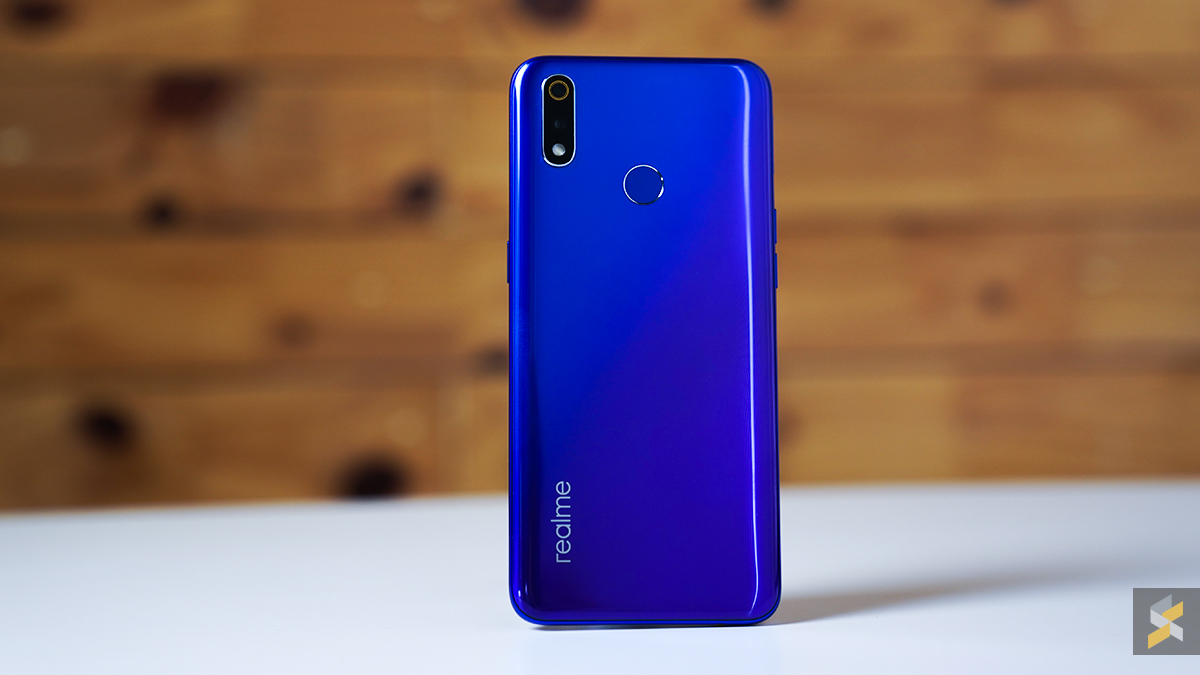
The Realme 3 Pro is essentially a great all-rounder of a device. One of, if not the most important factor that will greatly affect your experience (especially over time) with a smartphone is the processor powering the device. In this respect, Qualcomm’s upper-midrange Snapdragon 710 does a fine job, with many of the other options below RM1,000 utilising Snapdragon 6xx processors (or their equivalents from other brands).
It sports a 6.3″ Full HD+ LCD display, which is certainly large enough for any number of tasks, and a 4,045mAh battery is certainly sufficient by today’s standards. In a nice touch, Realme also throws in a VOOC 3.0 fast-charger into the box, with the Realme 3 Pro supporting up to 20W charging. And of course, it comes with Android 9.0 (Pie) out of the box, with the relatively recent launch date (April 2019) of the device making it a safe bet for continued support from Realme in terms of updates.
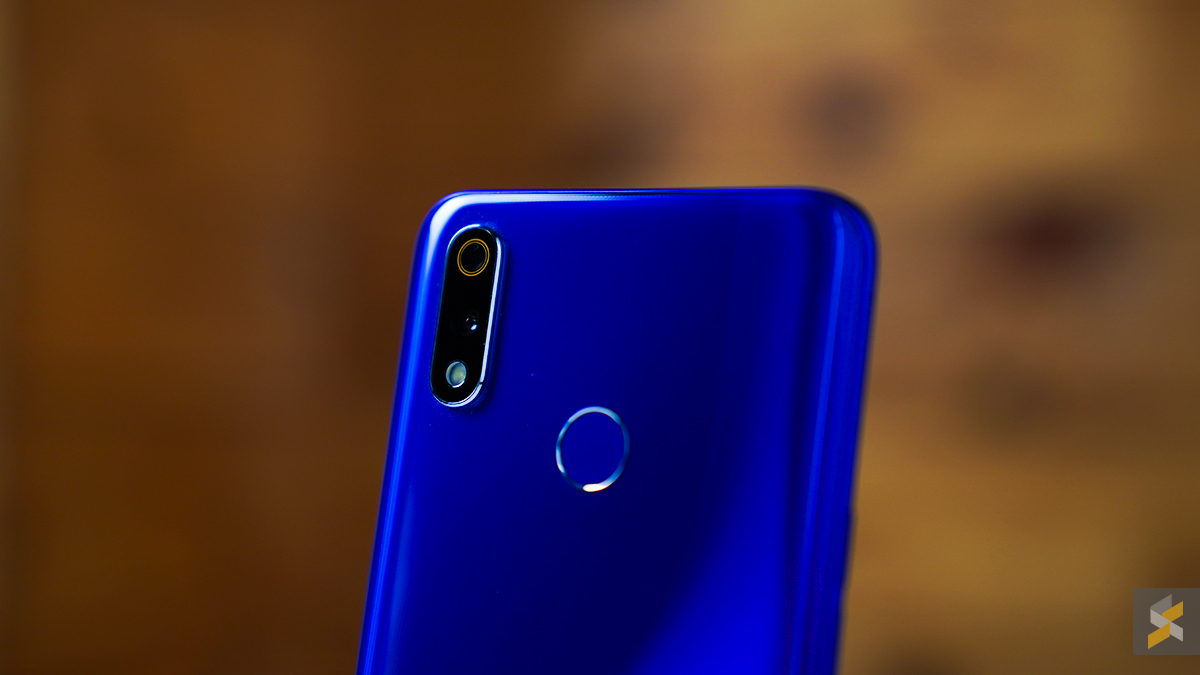
As for photos, it’s a decent enough setup with a main sensor that supports 4K video recording, although you miss out on the versatility offered by an ultra wide-angle lens. A front-facing 25MP for selfies doesn’t hurt, either. But at RM999, the Realme 3 Pro offers some genuine value, with 6GB of RAM and 128GB of storage available at such a low price. If 128GB isn’t enough, there’s also a dedicated microSD slot on the device, which means that you’ll be able to have 2 nano-SIMs running at the same time, all while having a microSD card expanding your storage.
Overall, a superb smartphone for its price, and thanks to the recent release of the Realme 5 Pro, the RRP of the Realme 3 Pro has dropped to provide some great value for the budget smartphone segment.
Where to buy:
Online: Lazada, Shopee
Store: Authorised Realme retailers
#2 Redmi Note 7: yet another solid midrange phone from Redmi
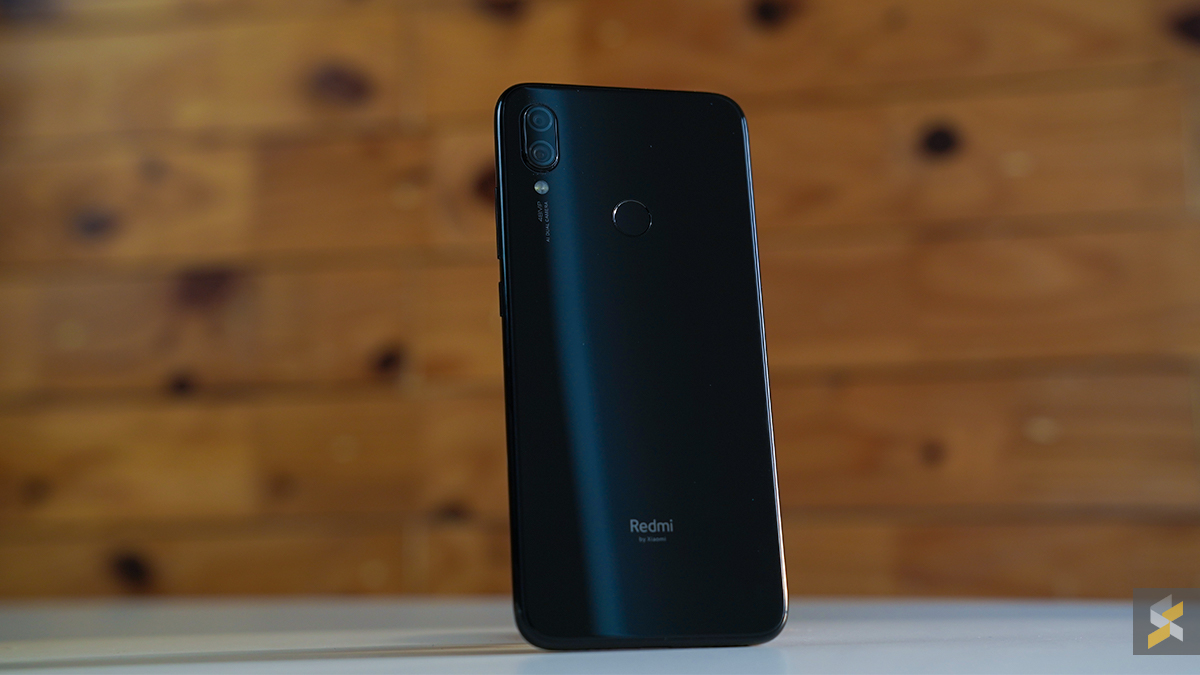
Every year, the new Redmi Note smartphone is always something I look out for. They usually offer a really good blend of specs, solidity, and power, and the Redmi Note 7 isn’t any different in this aspect. It’s processor is the more-than-capable Snapdragon 660 from Qualcomm, and the top-spec model gives you 128GB paired with 4GB of RAM—all within RM1,000.
With smartphones at this price point, cameras can sometimes be a little disappointing, but the Redmi Note 7 sports a pretty solid 48MP main camera. This is backed up with a 5MP depth sensor for those bokeh effects. Overall, a colleague of mine found that the photos that you get from the Redmi Note 7 ranks up there with some of the best you can expect from a smartphone in this range.
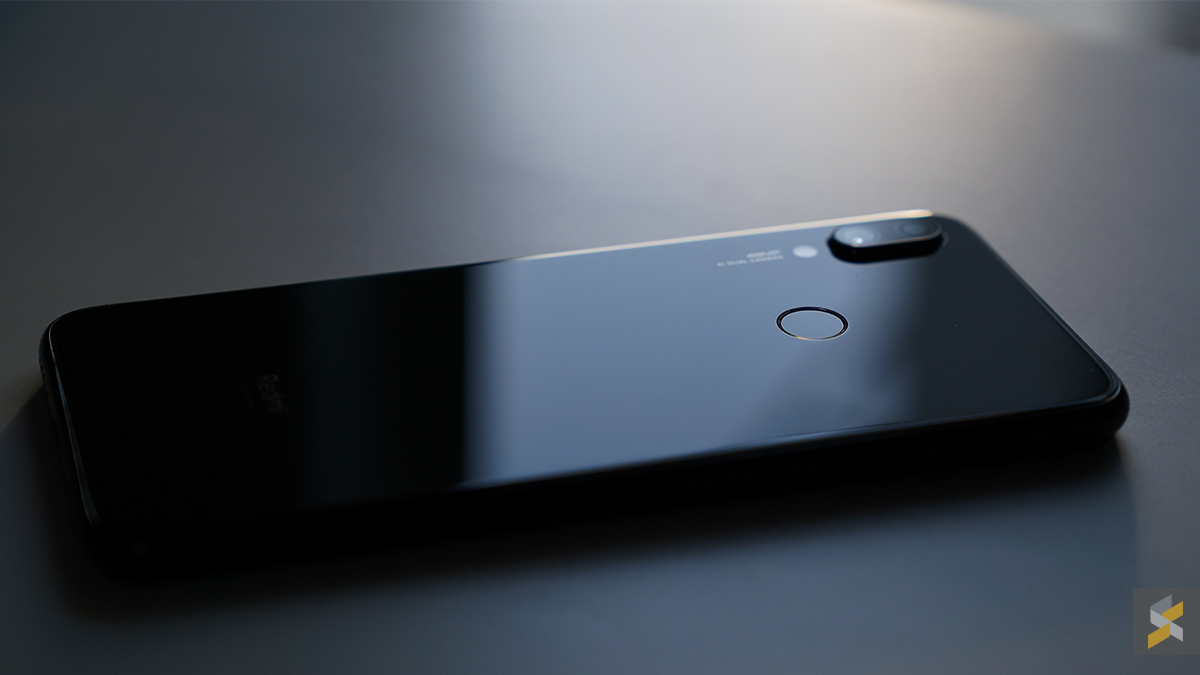
It isn’t lacking as far as the battery is concerned, with a 4,000mAh battery under the hood. You charge the phone through USB-C (yay!), and there’s an 18W charger in the box—but the Redmi Note 7 also supports up to 27W charge, so that means that you can use a Quick Charge 4.0+ charger for the best results. Throw in a large 6.3″ Full HD+ screen, and you’ve got yourself a well-rounded smartphone with 128GB of storage for under RM1,000.
Where to buy:
Online: Lazada, Shopee
Store: Authorised Xiaomi retailers
#3 The Mi A3 is the way to go if you want that stock Android experience
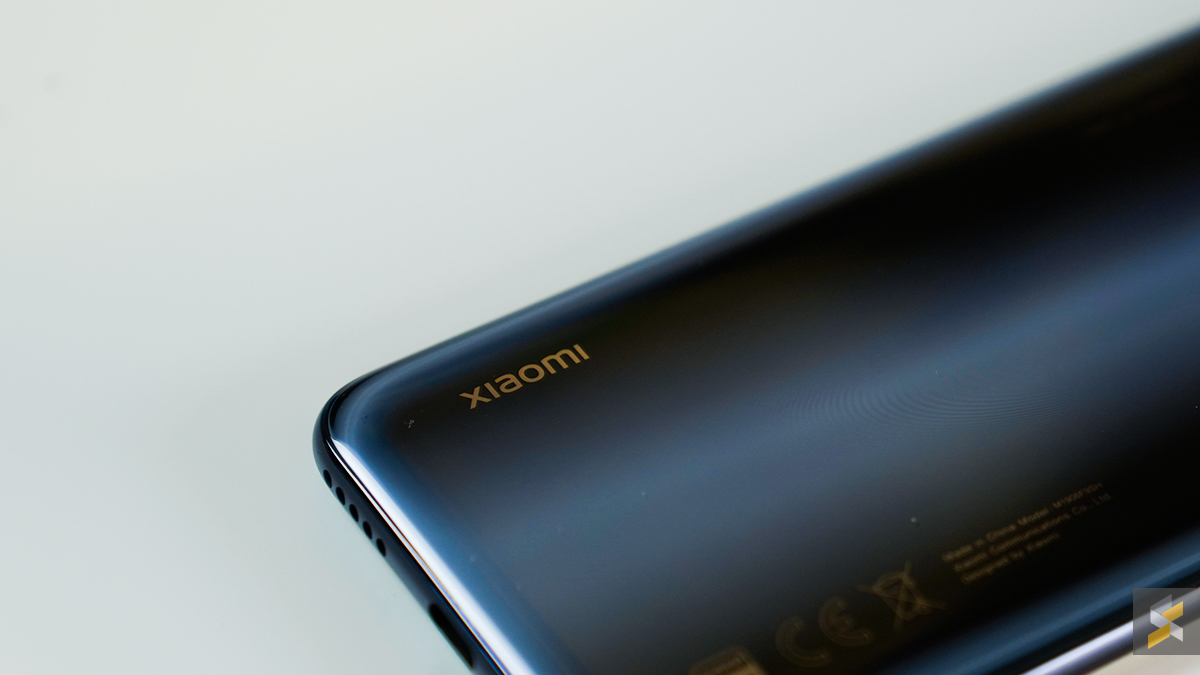
Not everyone’s cup of tea, but the Mi A3 makes it onto the podium due to the vanilla Android experience it offers, coupled with some solid specs. But let’s get the elephant out of the room—the Mi A3 uses a HD+ display, which is a downgrade from its predecessor, the Mi A2, in terms of resolution. Heck, even the Mi A1 had a Full HD display.
But perhaps that’s due to the new in-screen fingerprint scanner, which is a first on any of Xiaomi’s Android One smartphones. It’s also a Super AMOLED screen, which is great for visibility, and is a generally more vivid display. But resolution is a big thing to you, perhaps this isn’t the phone for you.
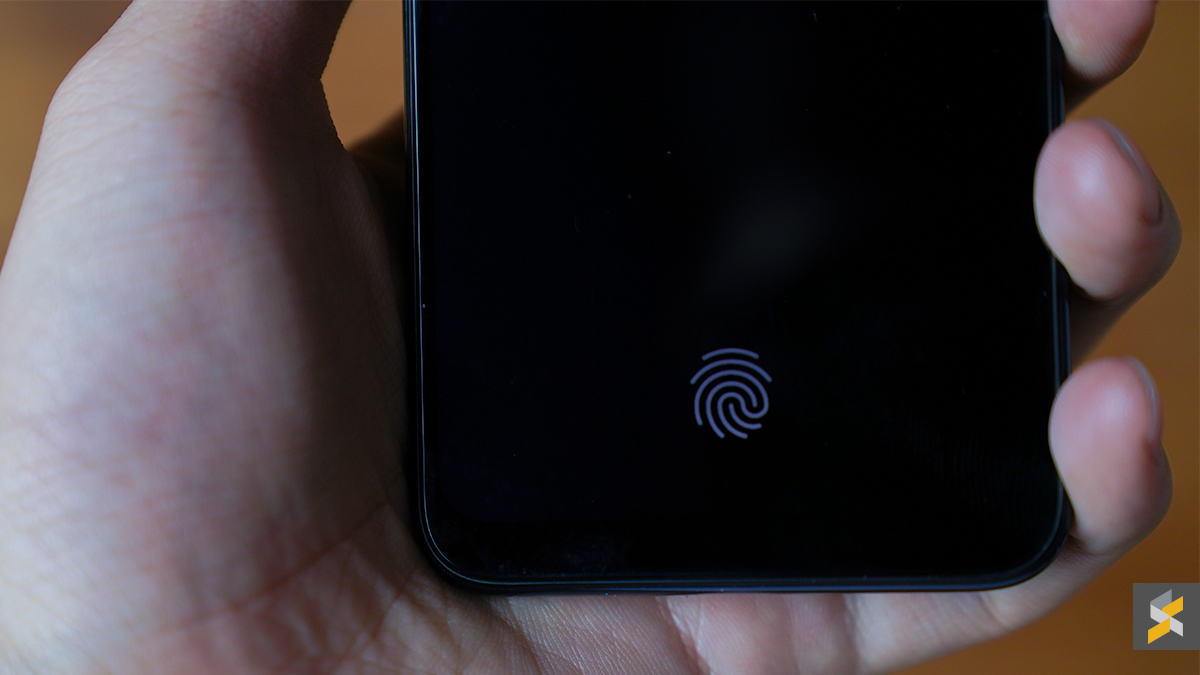
Besides that, it’s a familiar experience for those of you that are familiar with the stock Android experience, although there is still the infuriating camera app that Xiaomi pre-loads with all of its smartphones. The mid-range Snapdragon 665 handles most tasks well enough, and it should be sufficient for all but the most arduous tasks such as power-demanding gaming.
The Mi A3 was only released in July 2019 with Android 9 (Pie) out-the-box, and you can expect to get updates relatively fast, with Android 10 expected to arrive on the smartphone once it’s officially released. As for its camera, it’s certainly solid enough. You get the versatility offered by an ultra wide angle lens, and the 48MP main sensor is complemented by a 2MP depth sensor.
Not to mention a 4,030mAh battery that supports Quick Charge 3.0—which you can charge via USB-C. Overall, a great choice for someone that’s looking for a stock Android experience on a budget; its Super AMOLED display, for me, compensates for a lower resolution 720p screen.
Where to buy:
Online: Lazada, Shopee
Store: Authorised Xiaomi retailers
#Honourable mentions
But before we part ways, here are some honourable mentions to some devices that didn’t make it onto the podium, but still offer a lot for what it’s priced at. First up, the Vivo V11, which for me, is a great device for media consumption due to its 6.4″ Super AMOLED Full HD+ display. It’s paired with a solid specs under the hood, but I’d say that it’s held back by a small battery: 3,400mAh. But if you can live with that—and Vivo’s FunTouch OS—it’s certainly a decent smartphone.
And of course, the Honor Play, which is the only smartphone on the list to have a genuine flagship processor. The Kirin 970, lest we forget, is also featured on older Huawei flagships like the P20, and along with GPU Turbo tech, should give you a great gaming experience. It’s a little older, and it’s pretty average besides that, but still: a great gaming device.
And there we have it. Do keep in mind that each user’s demands differ from the other, so use the comparison table above if you have specific needs, as the editor’s choice is made up of the best overall smartphones here.
Did this buyer’s guide help you come to a decision? Leave a comment below (or on our Facebook post) with your thoughts.

